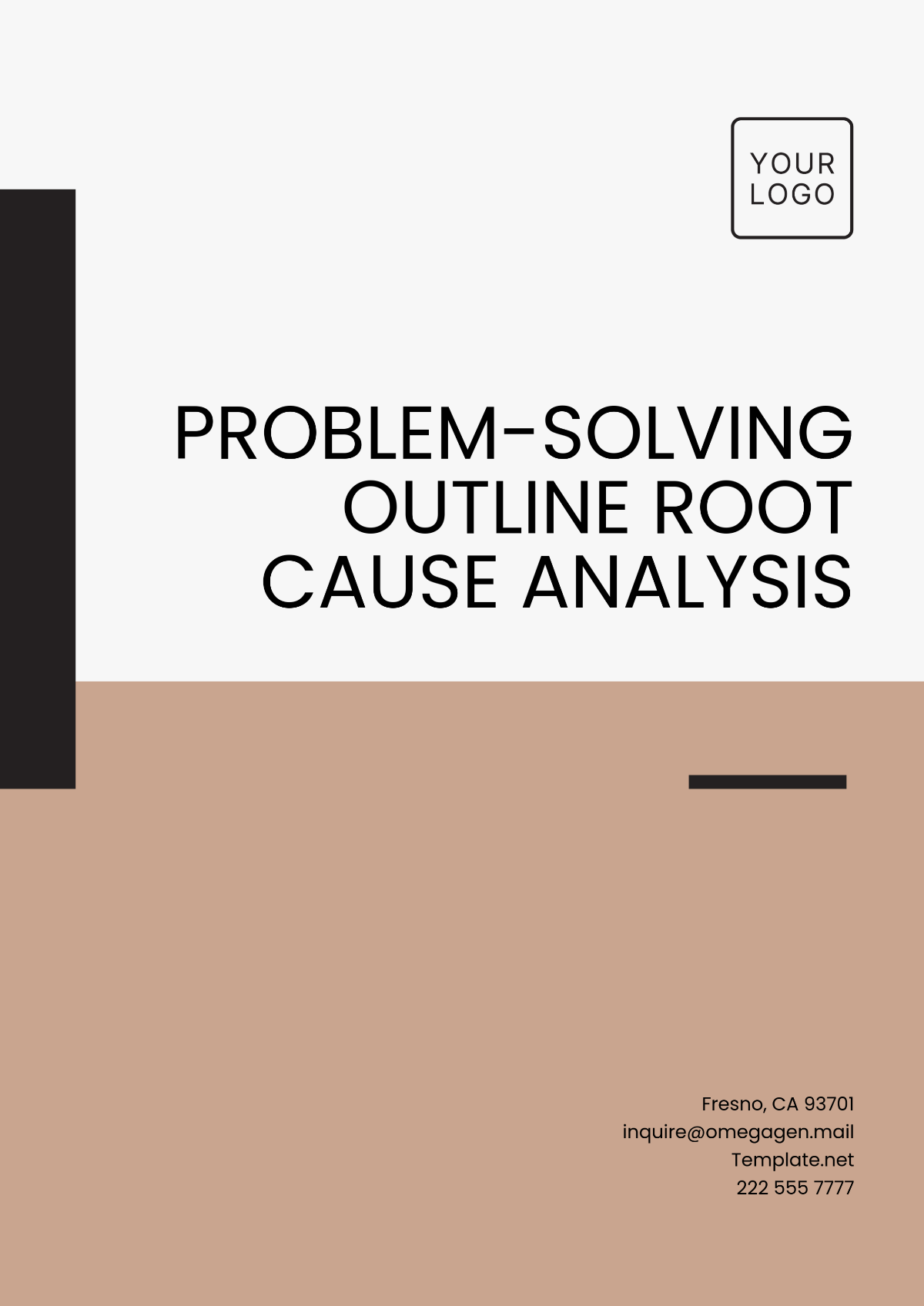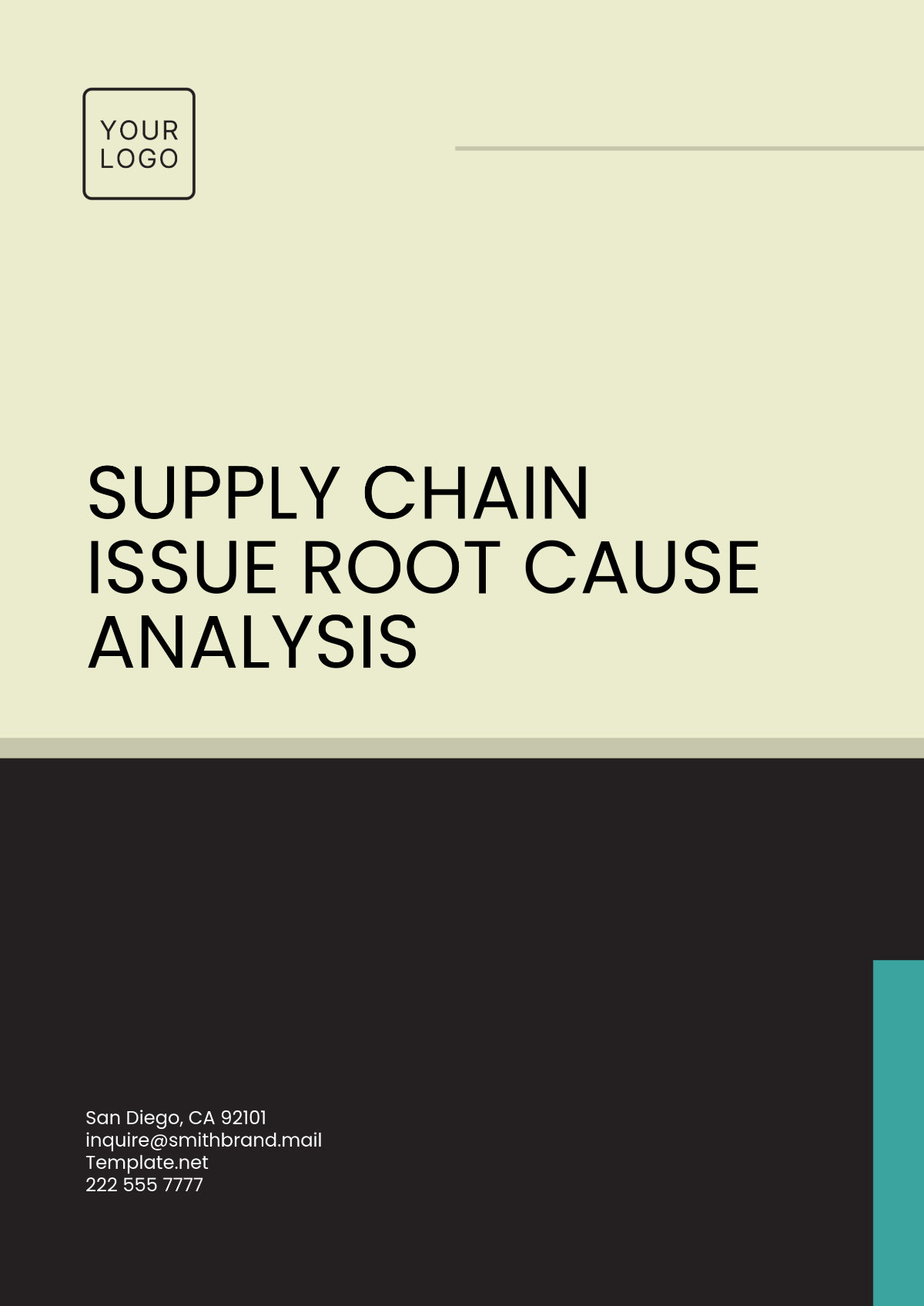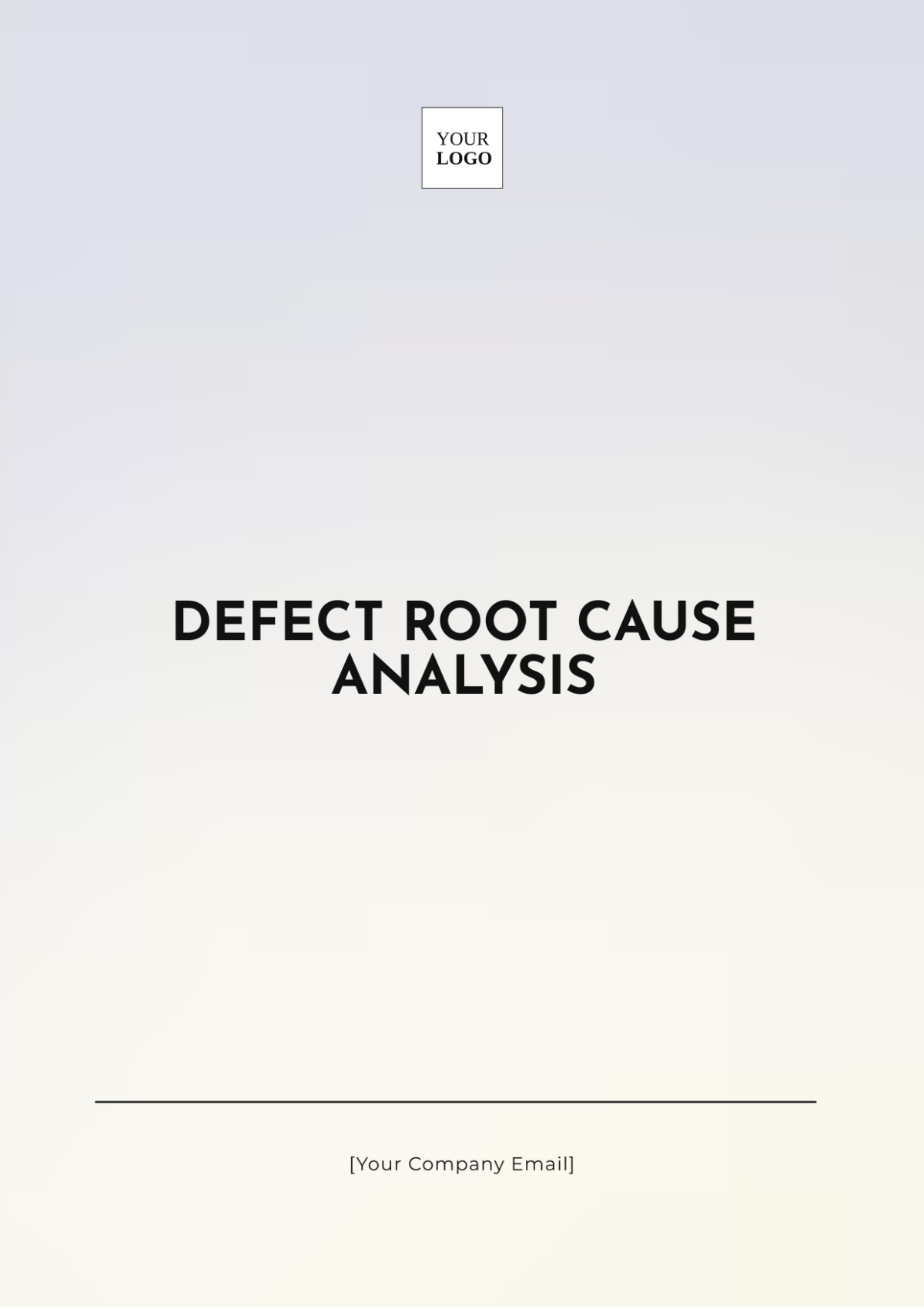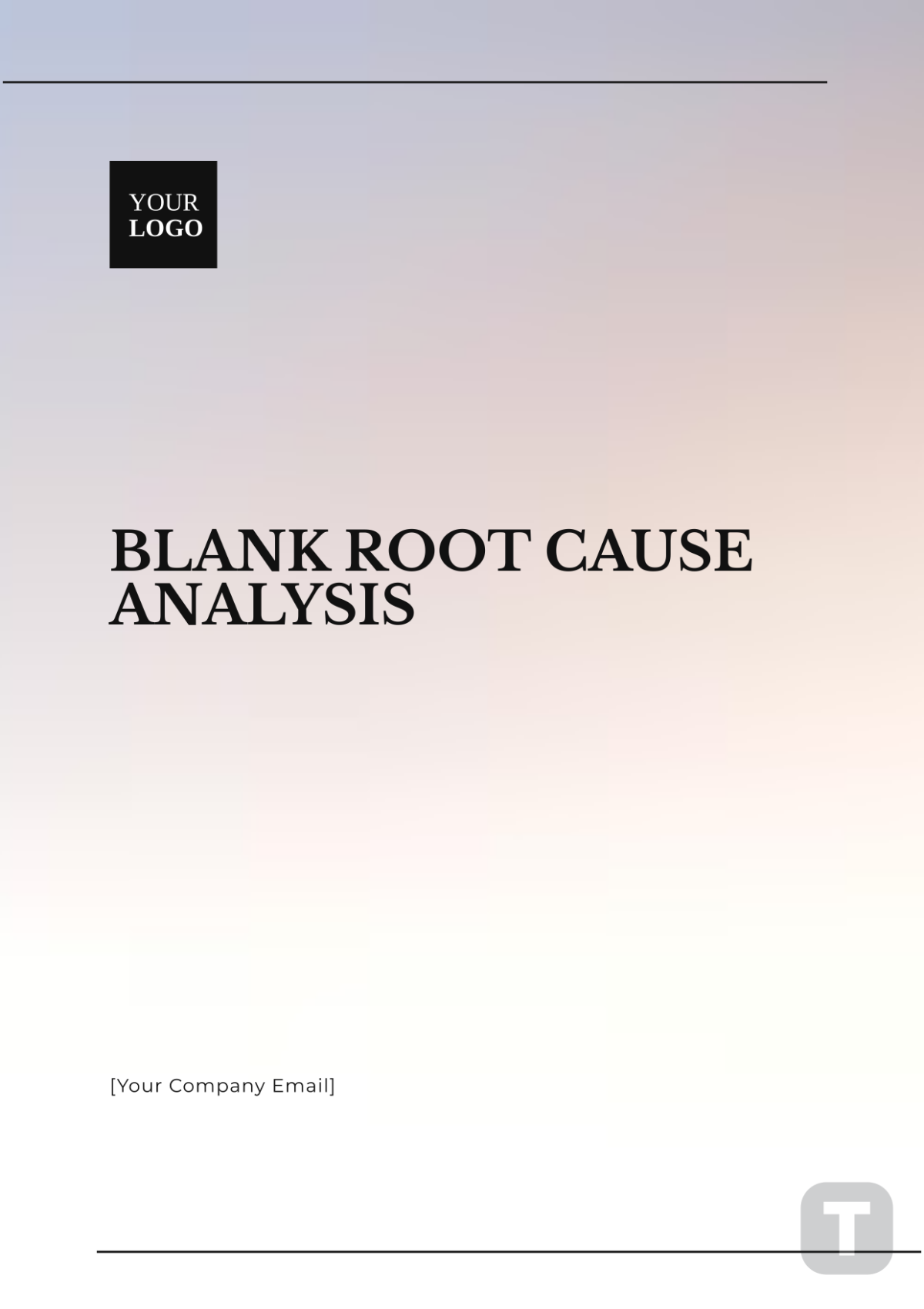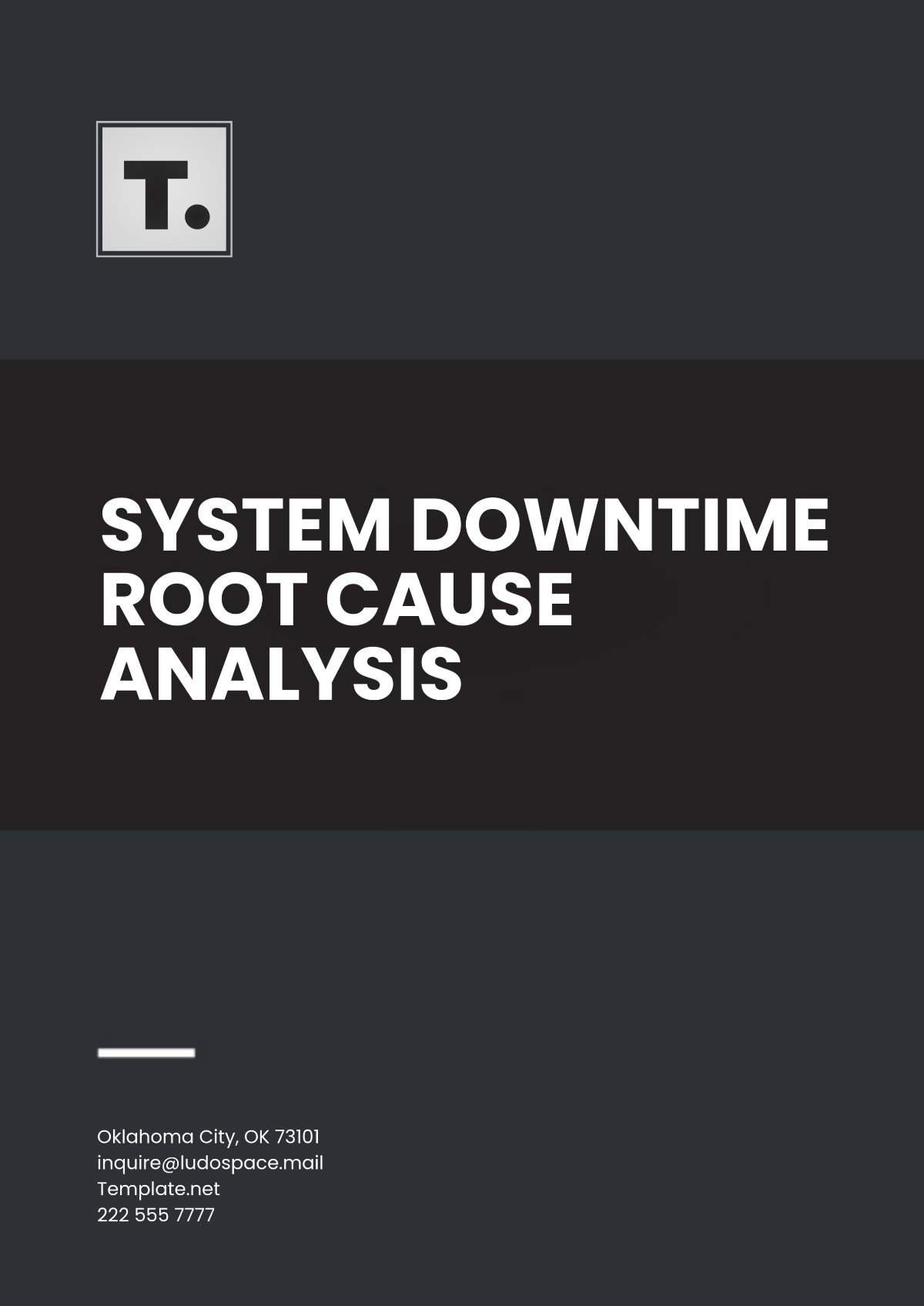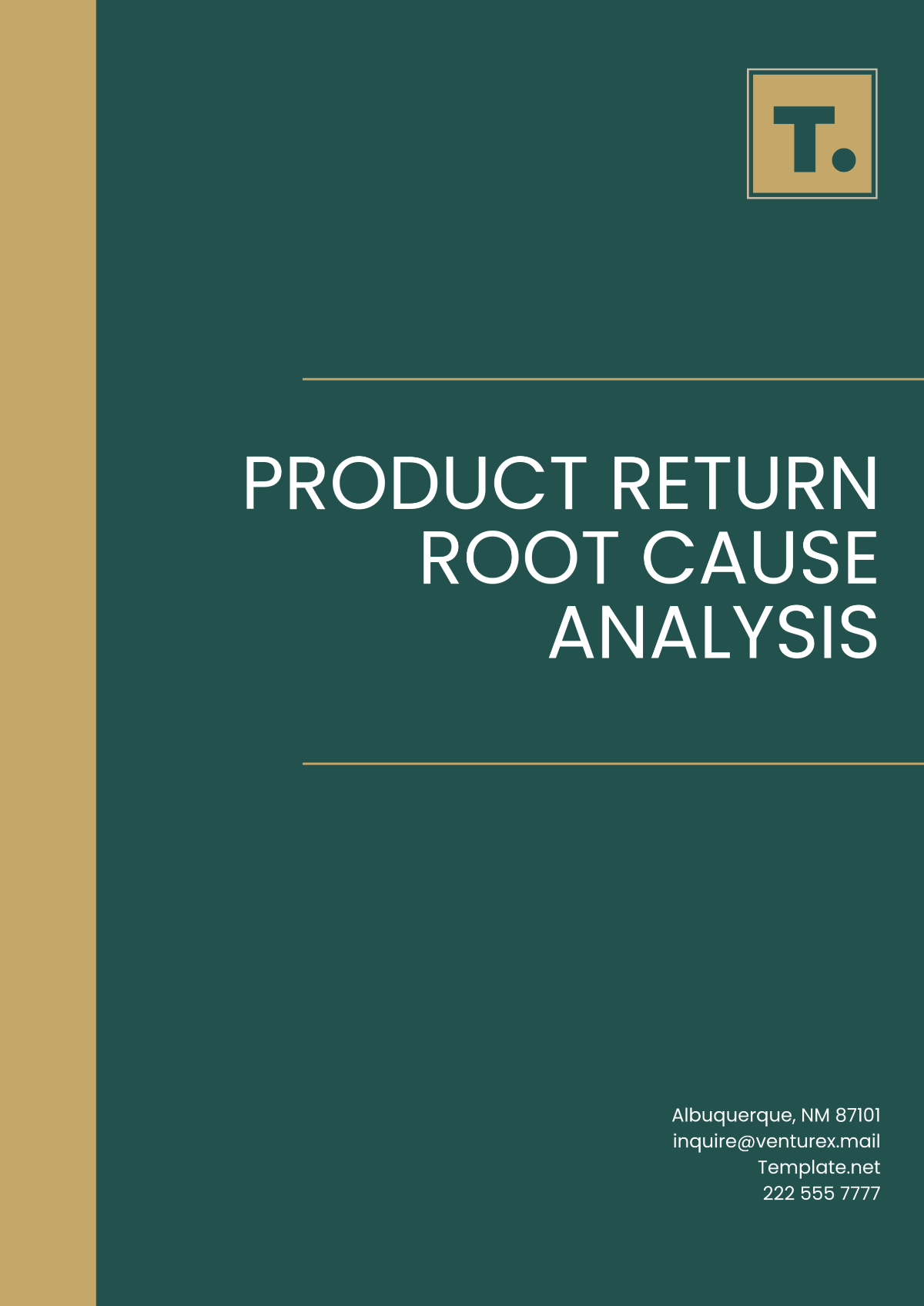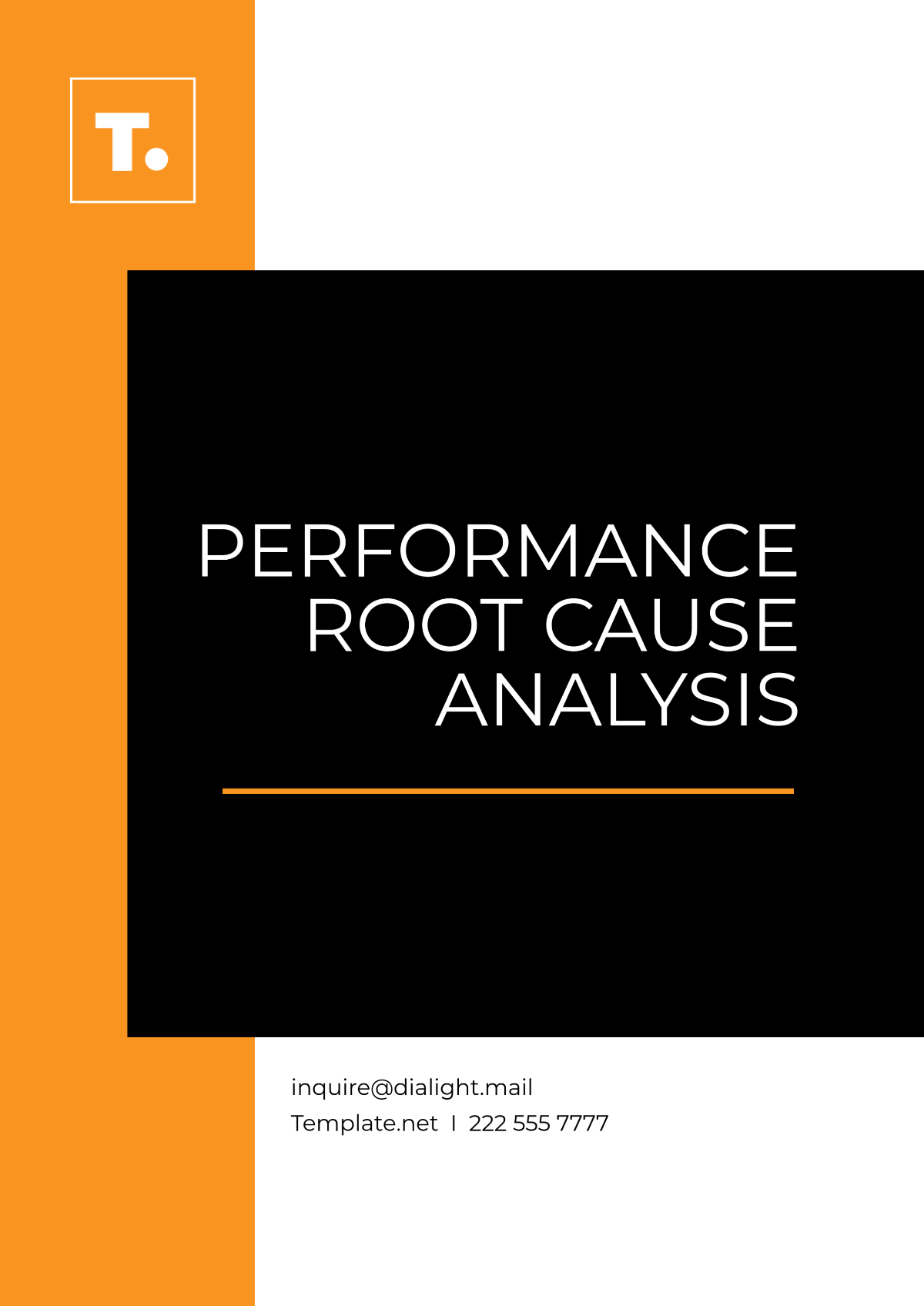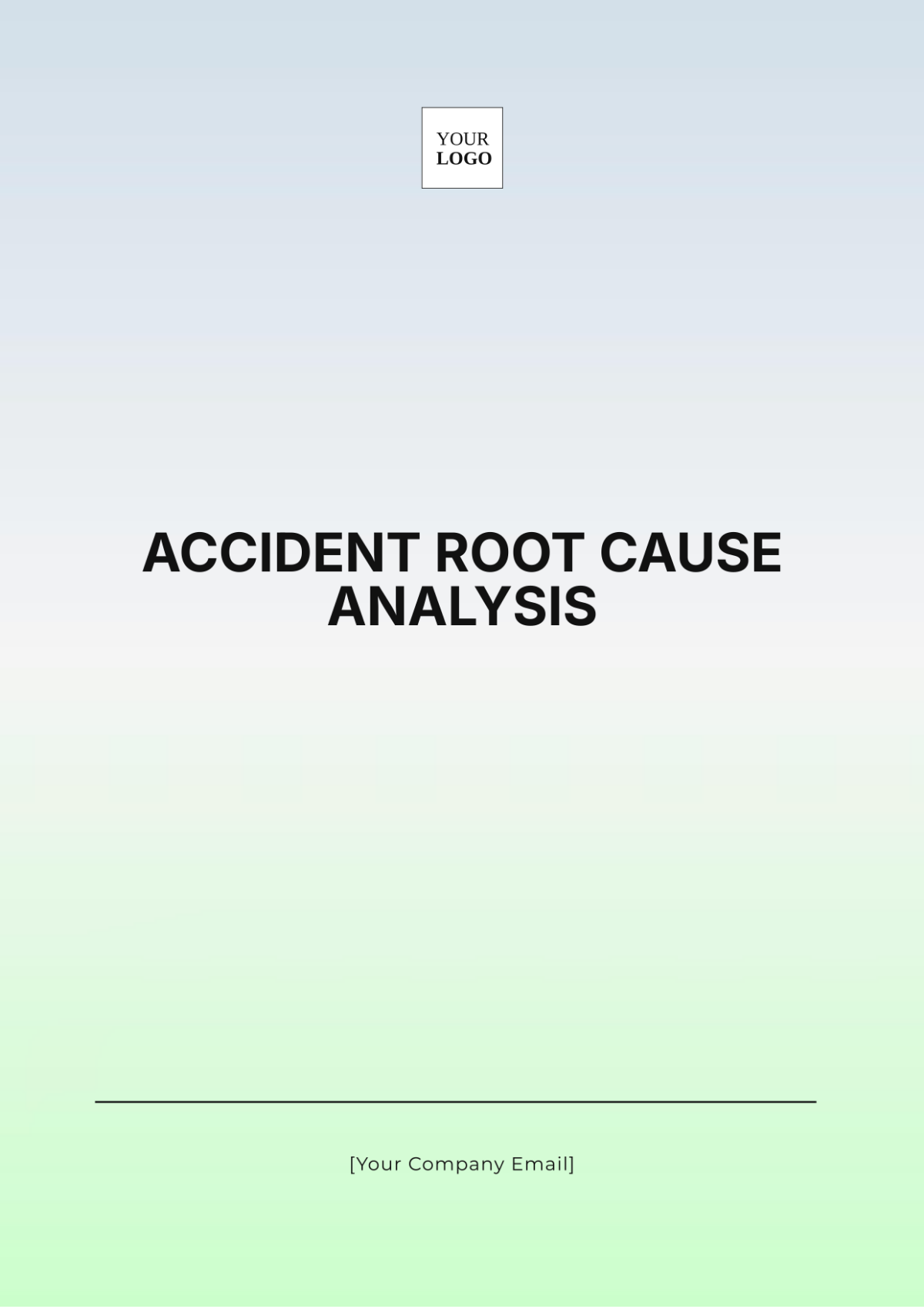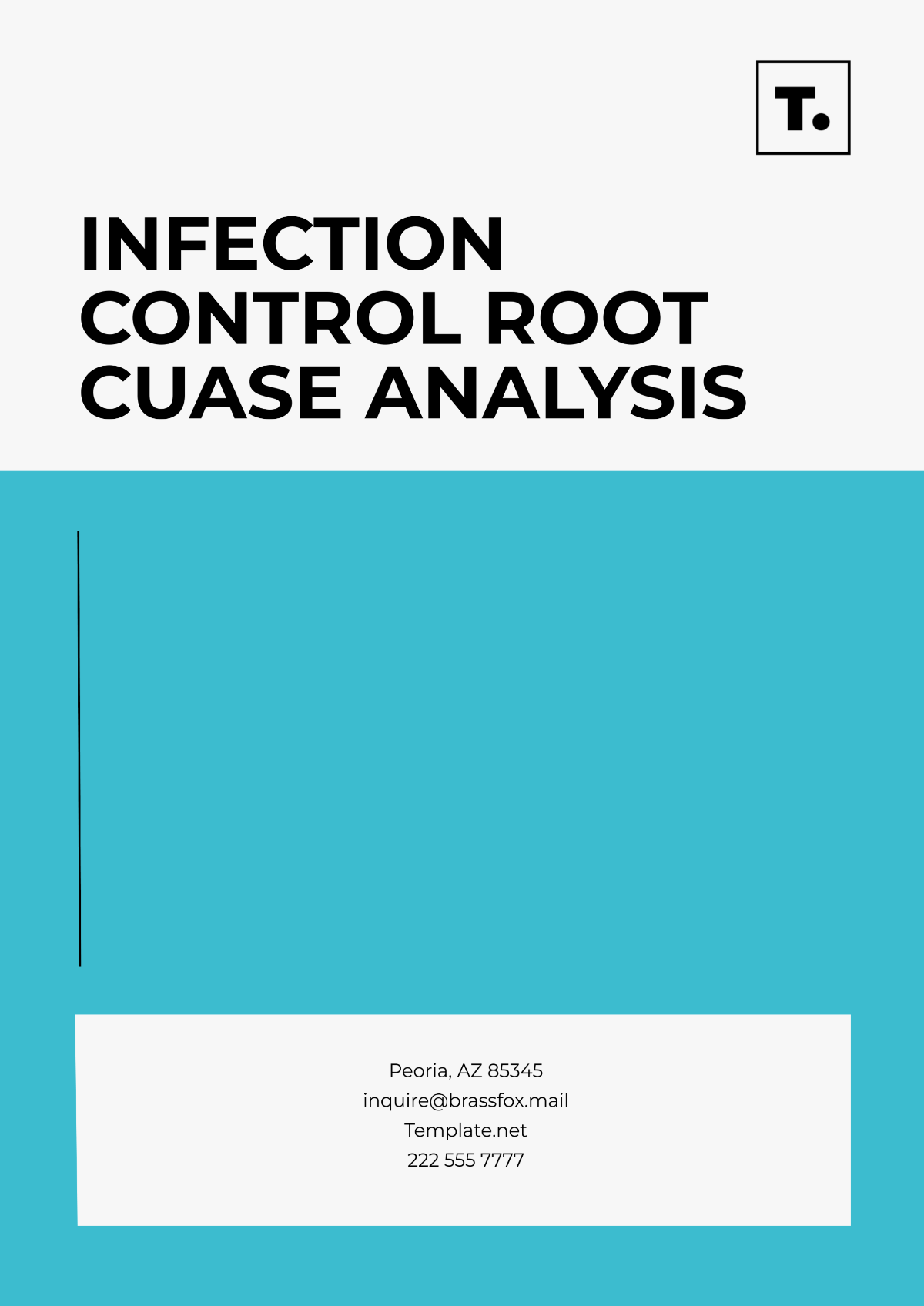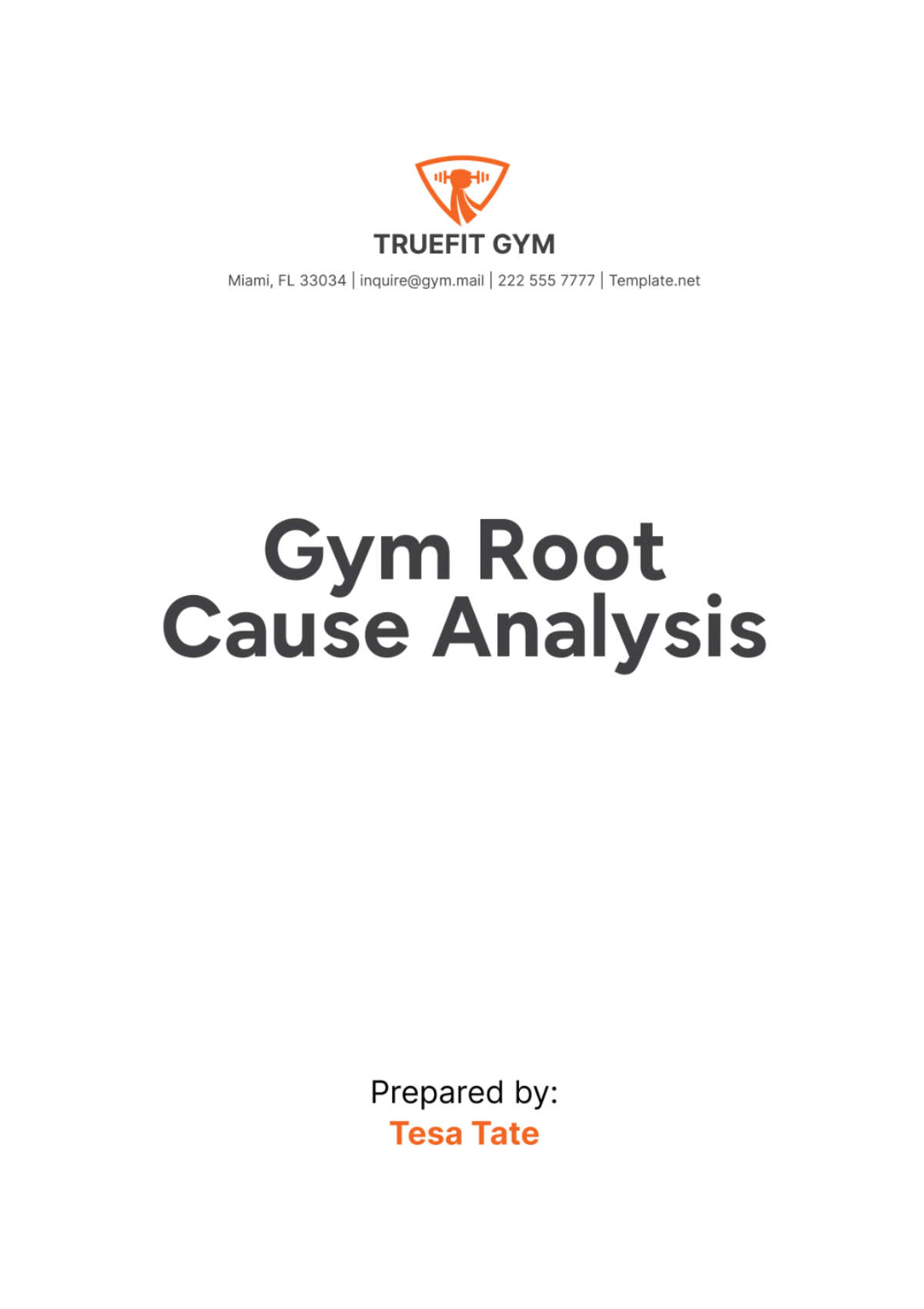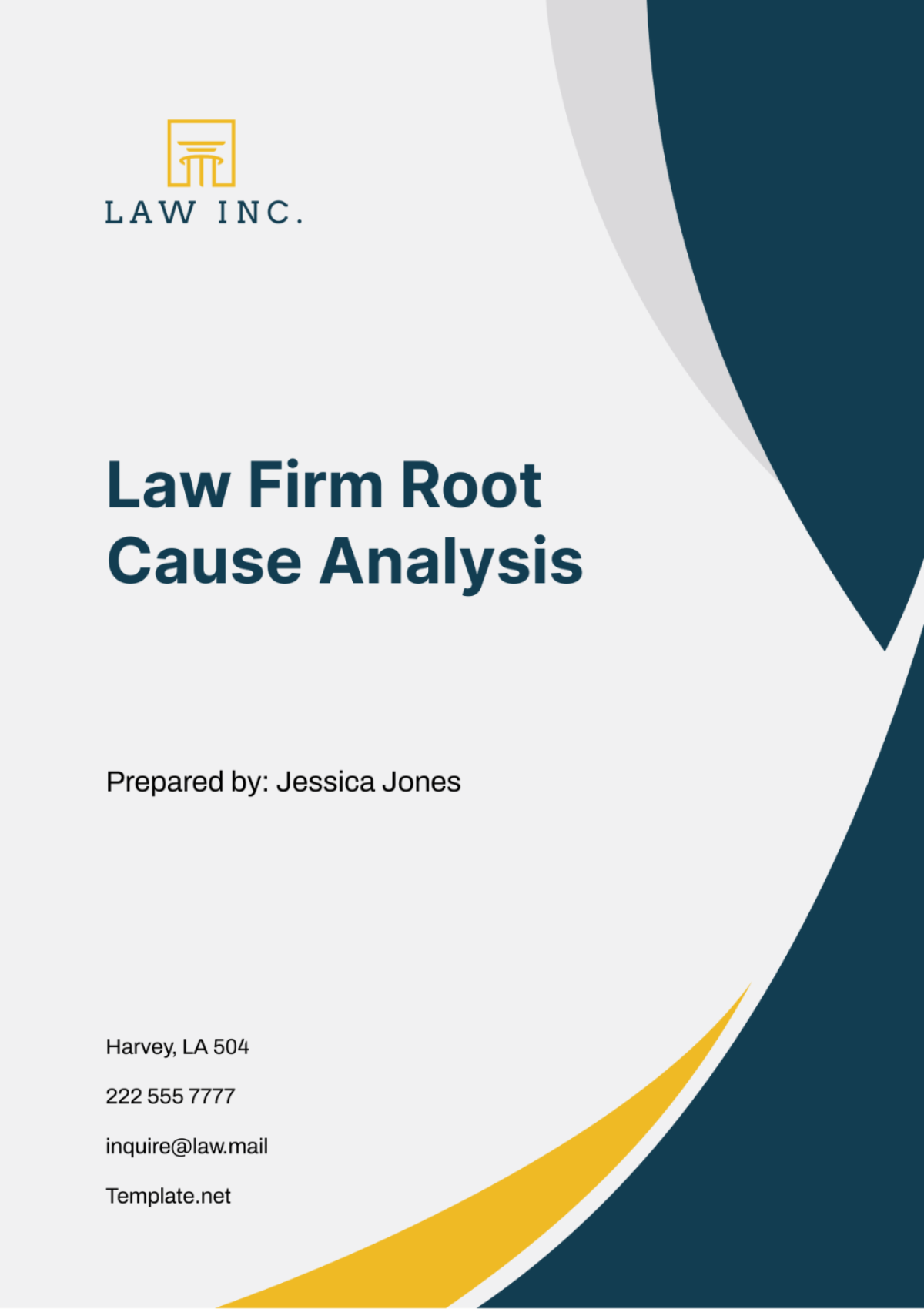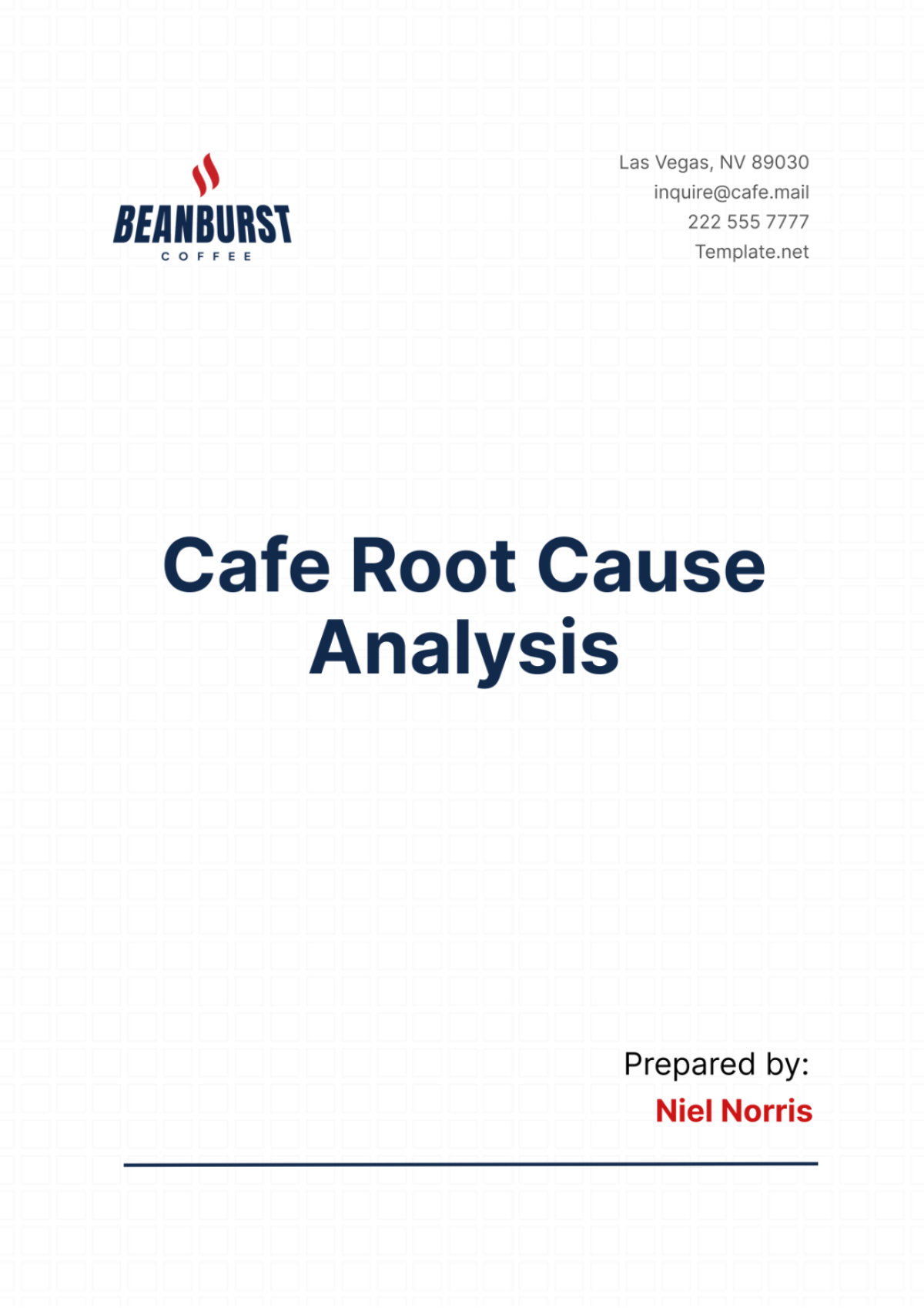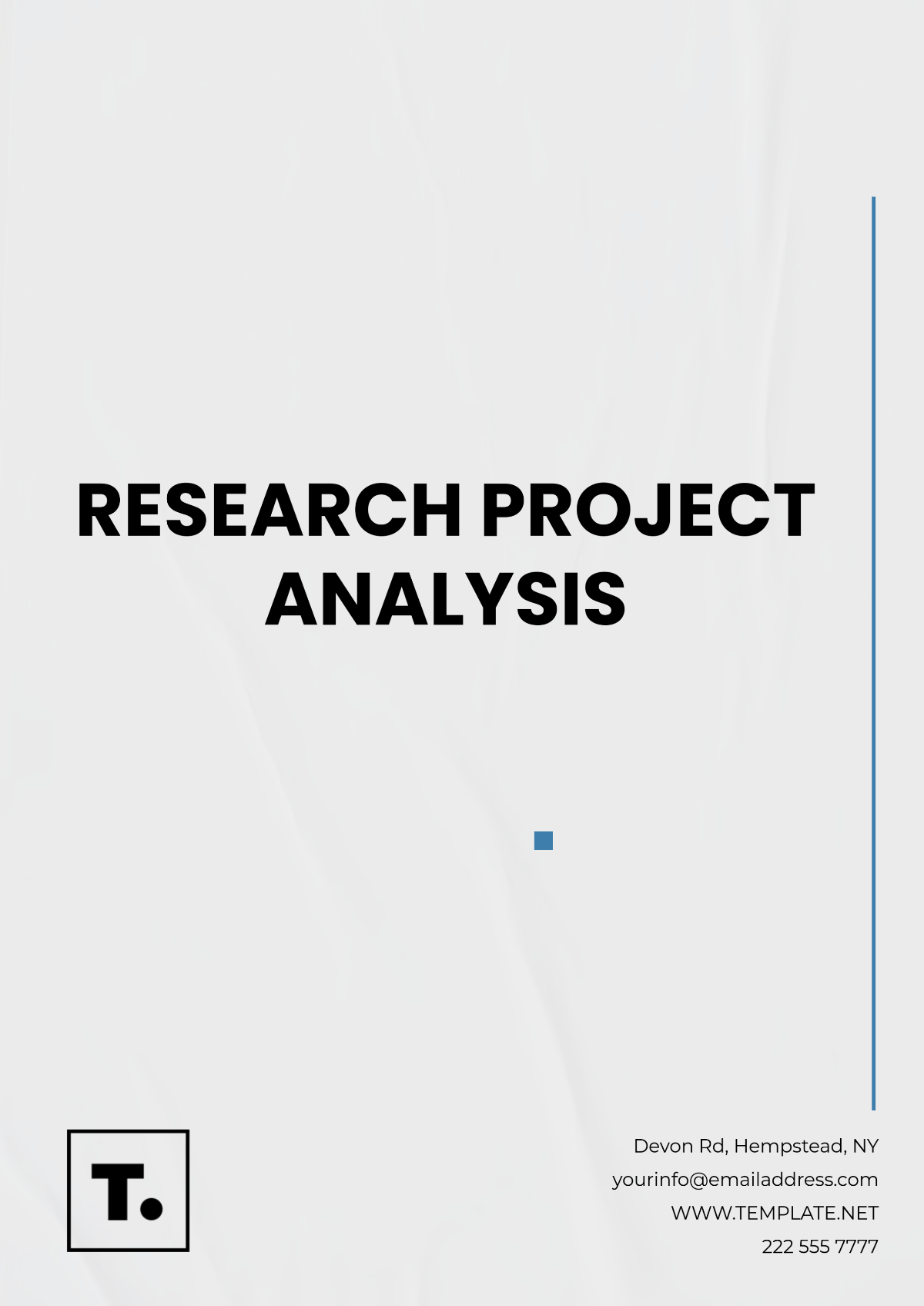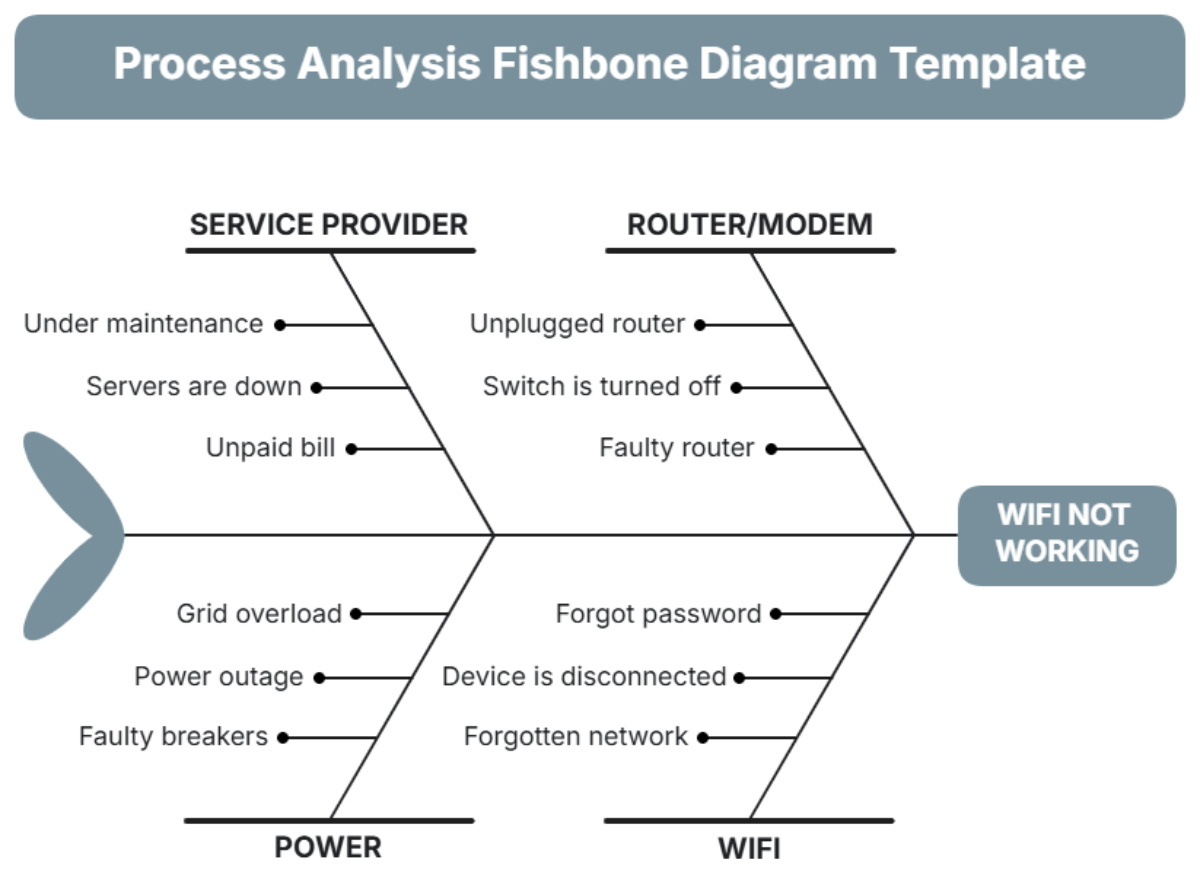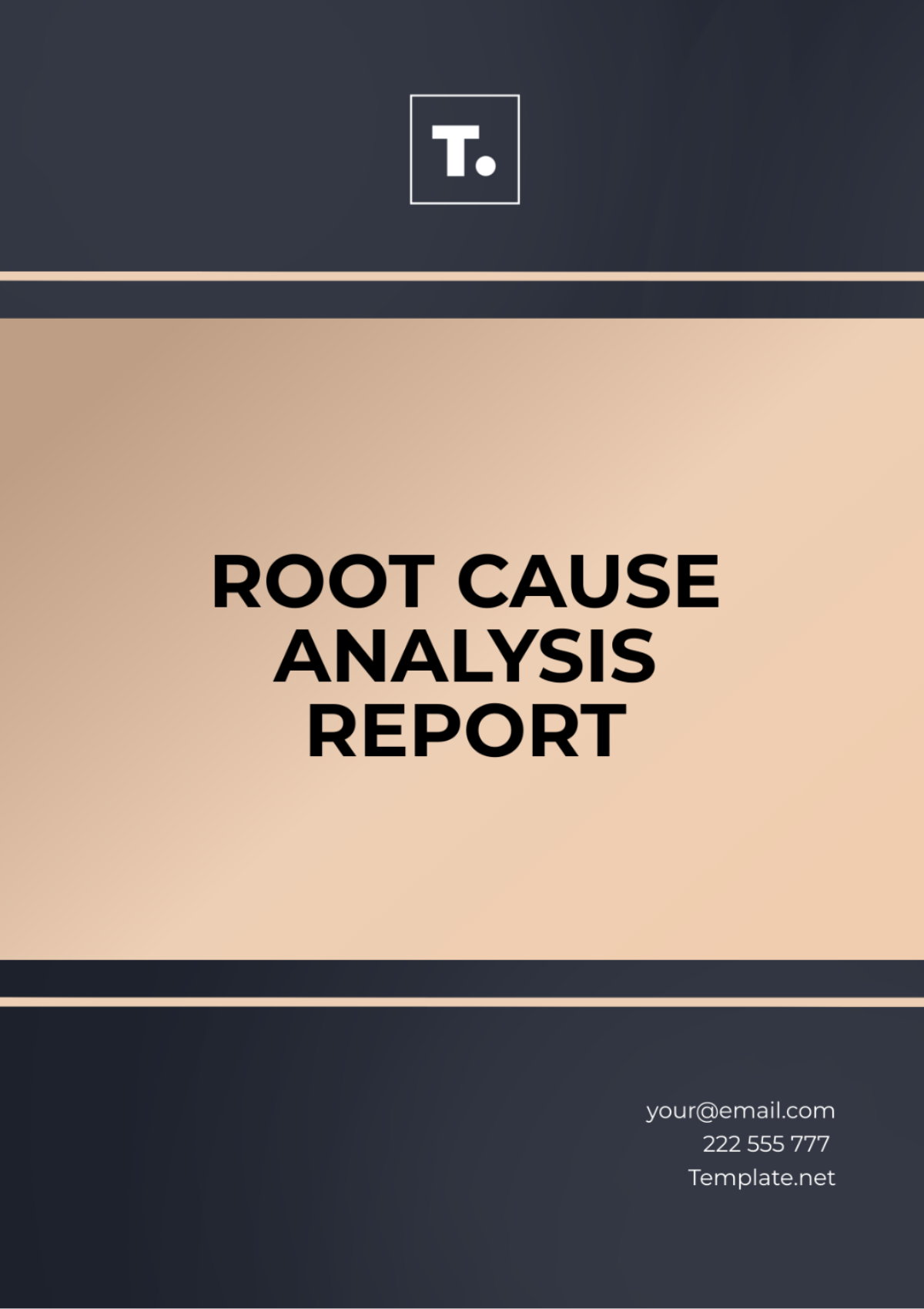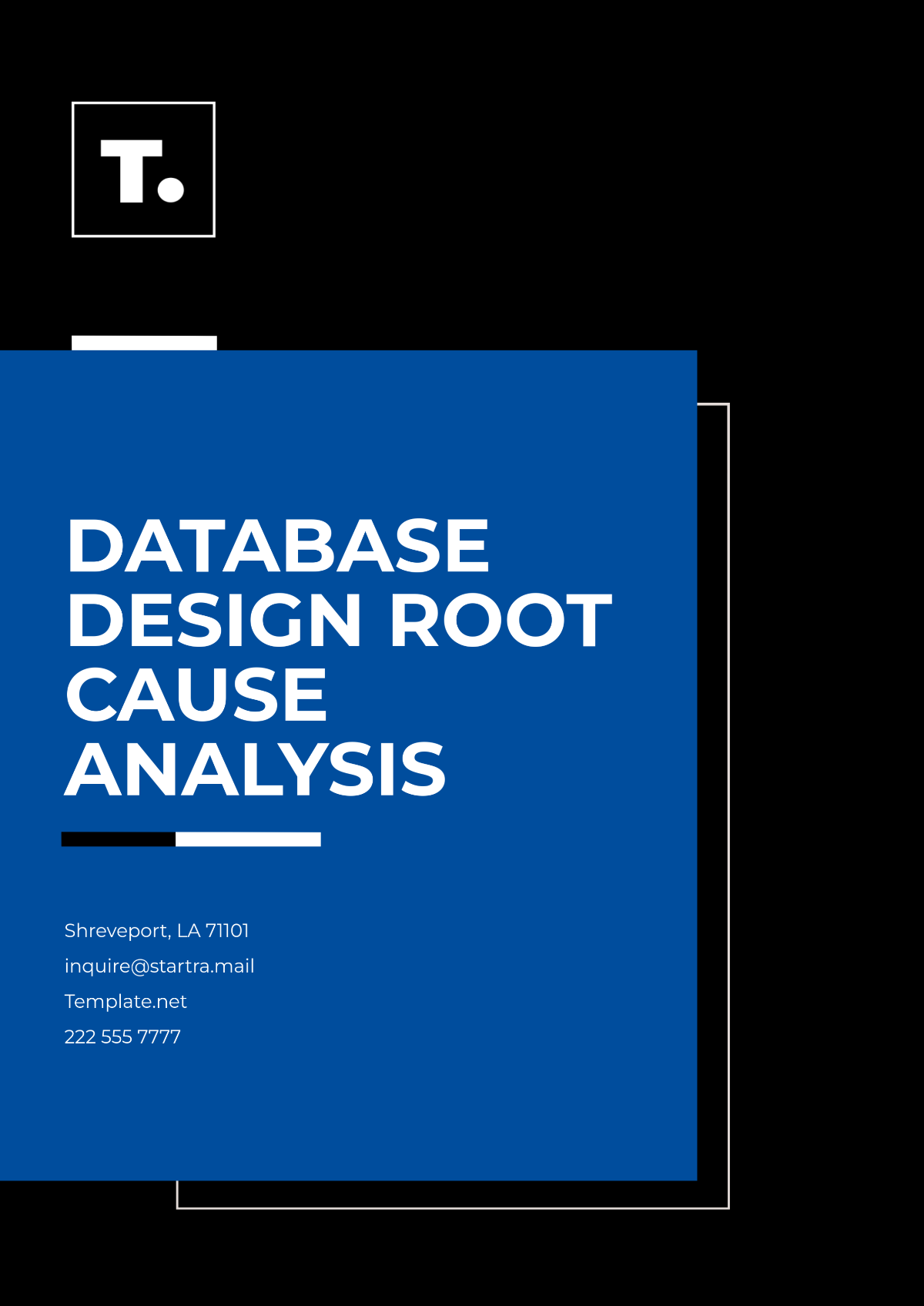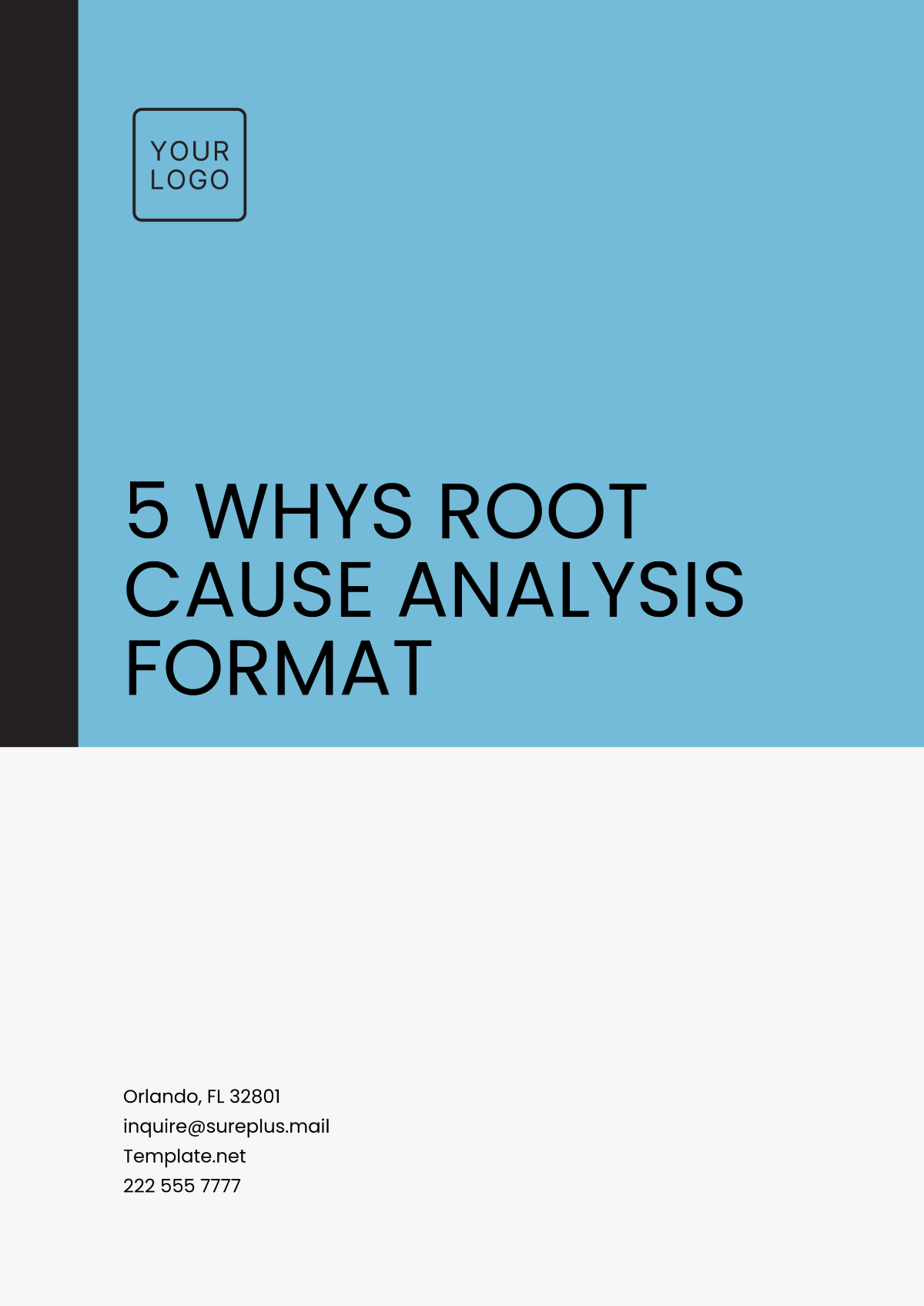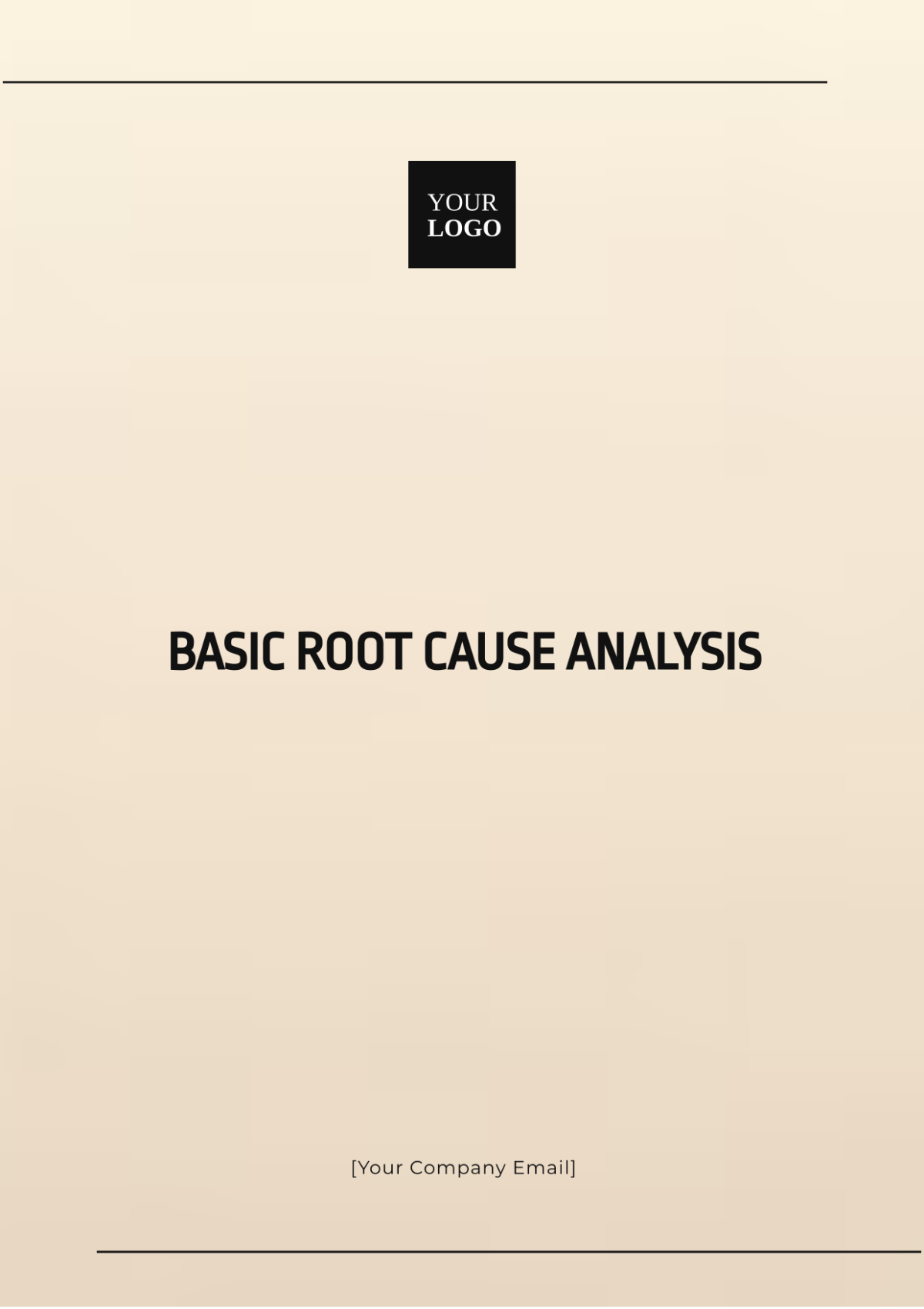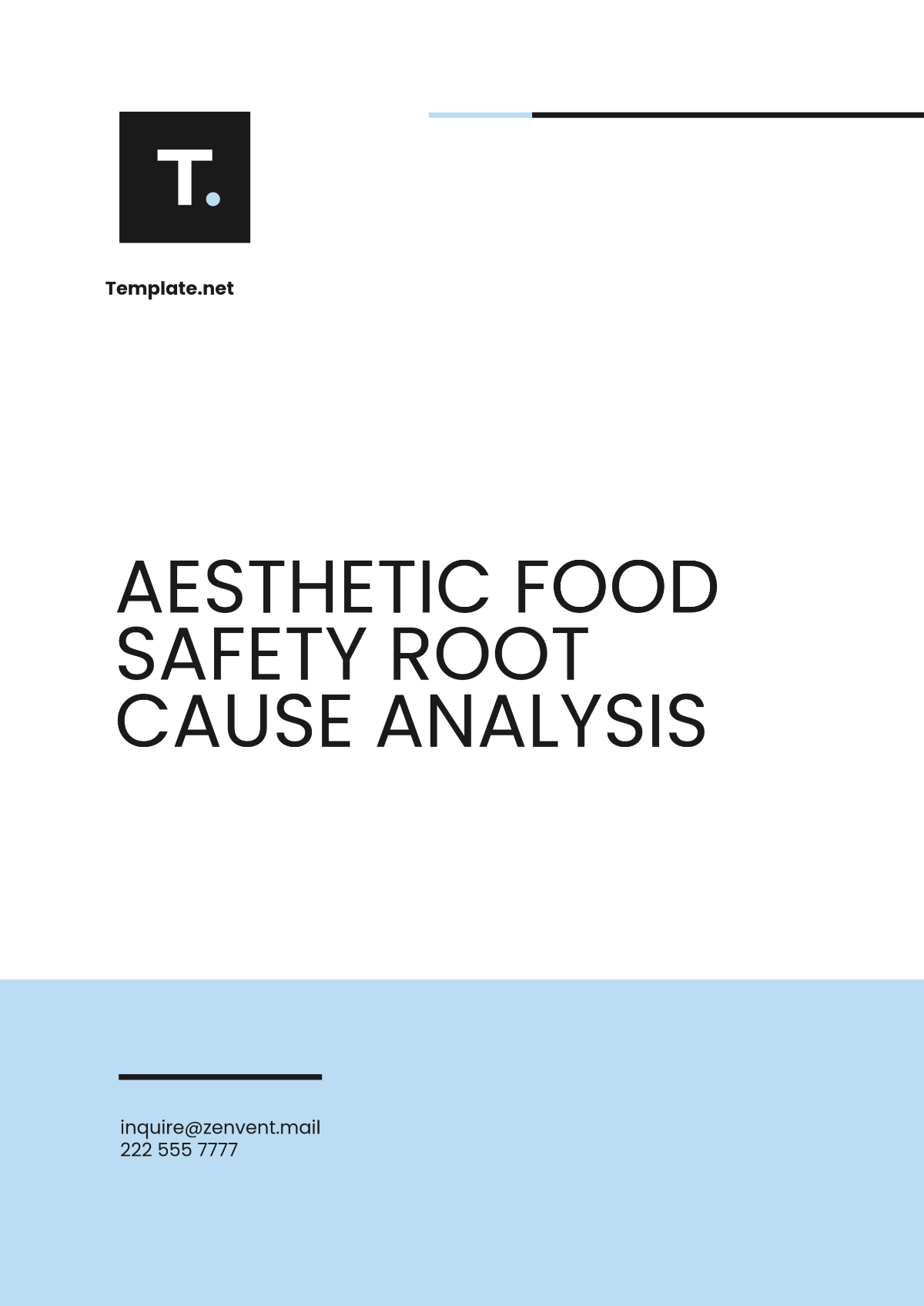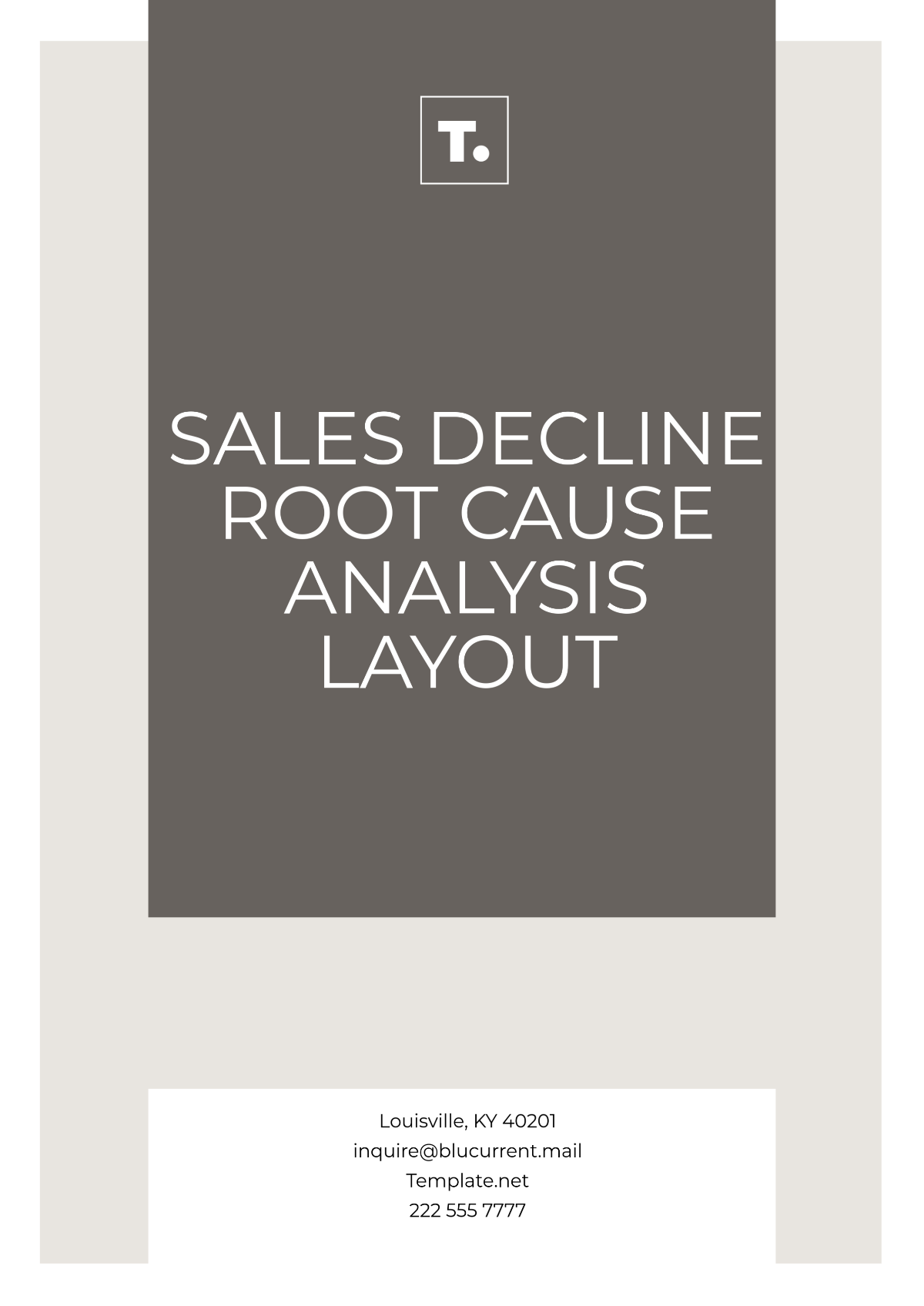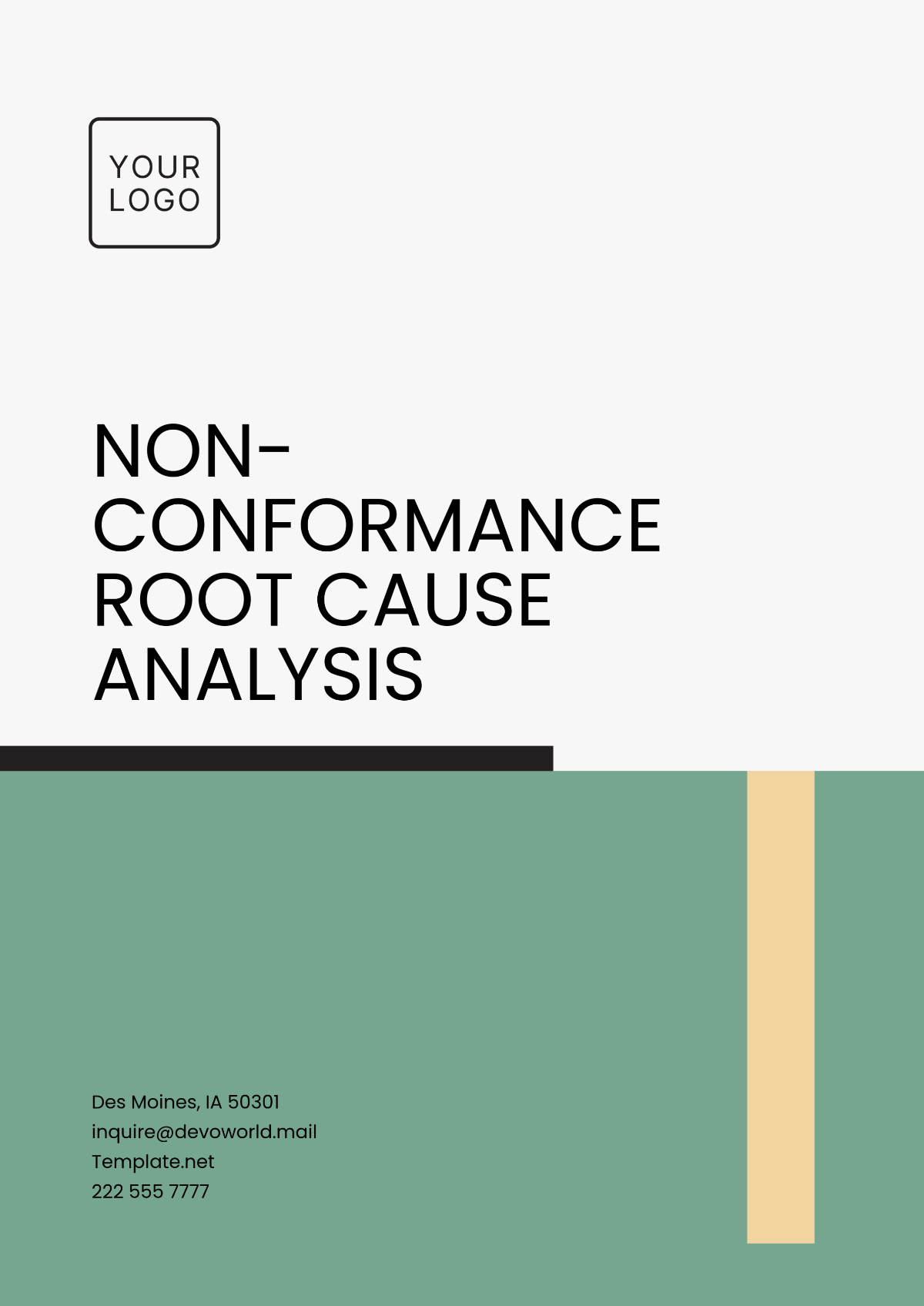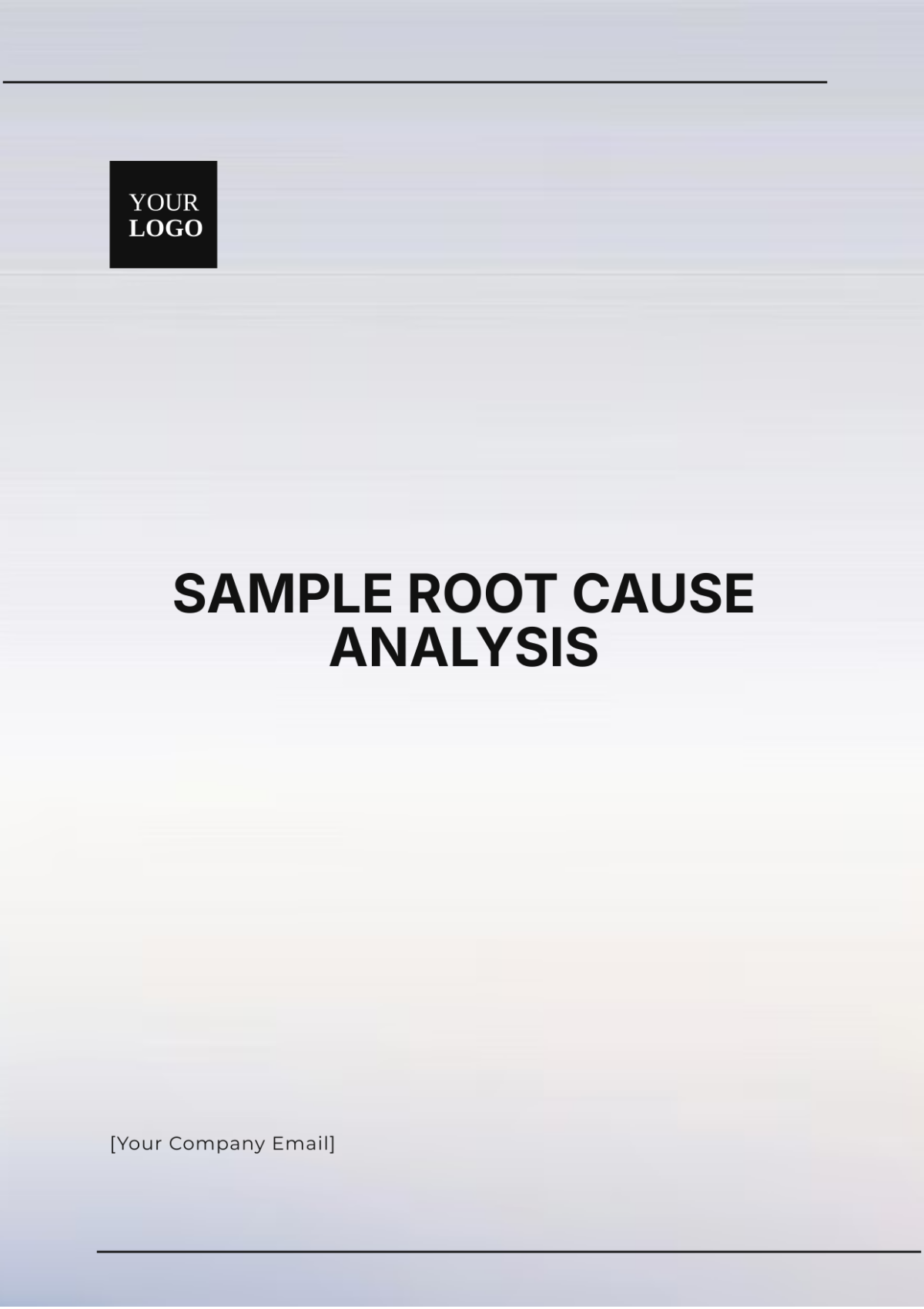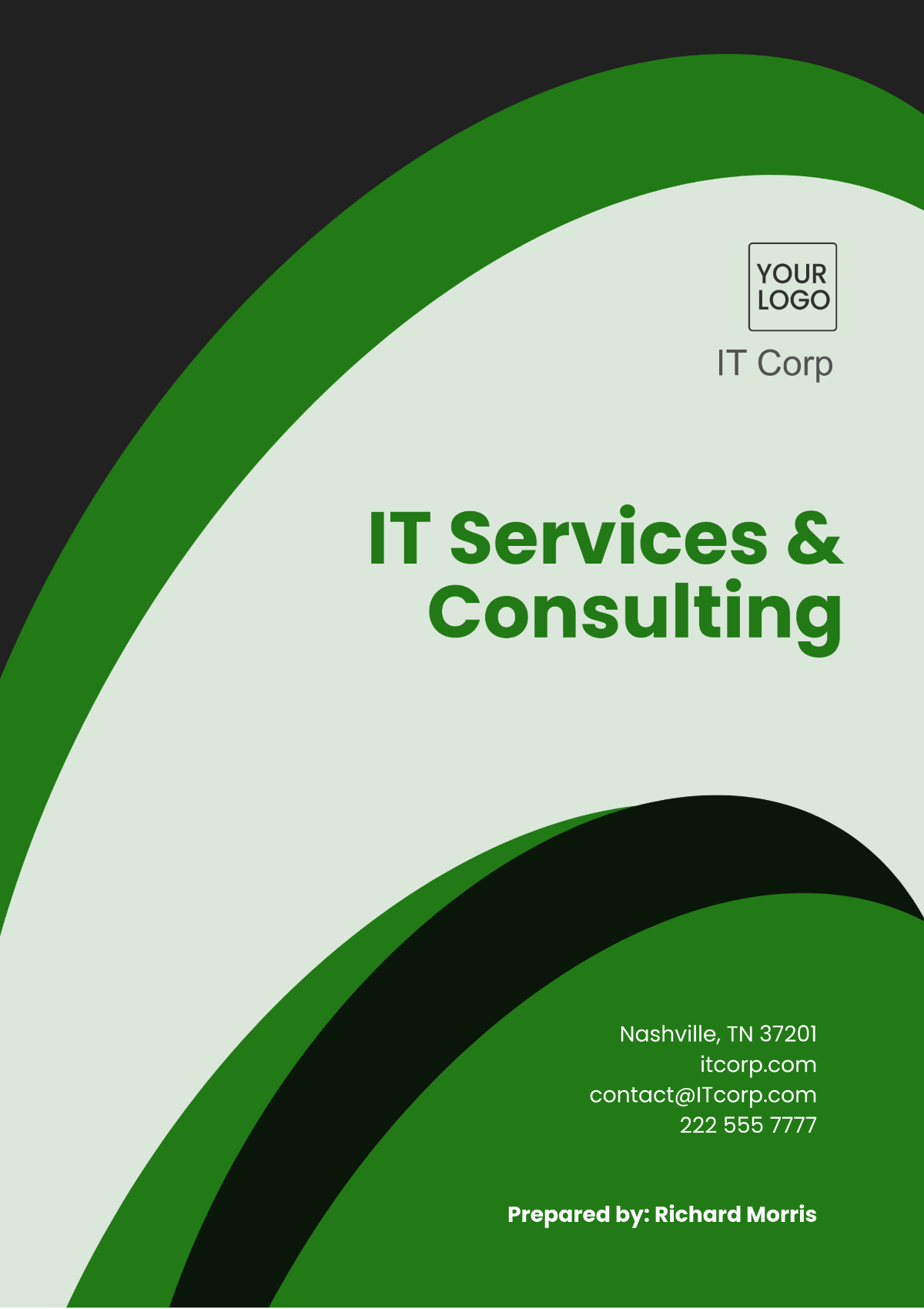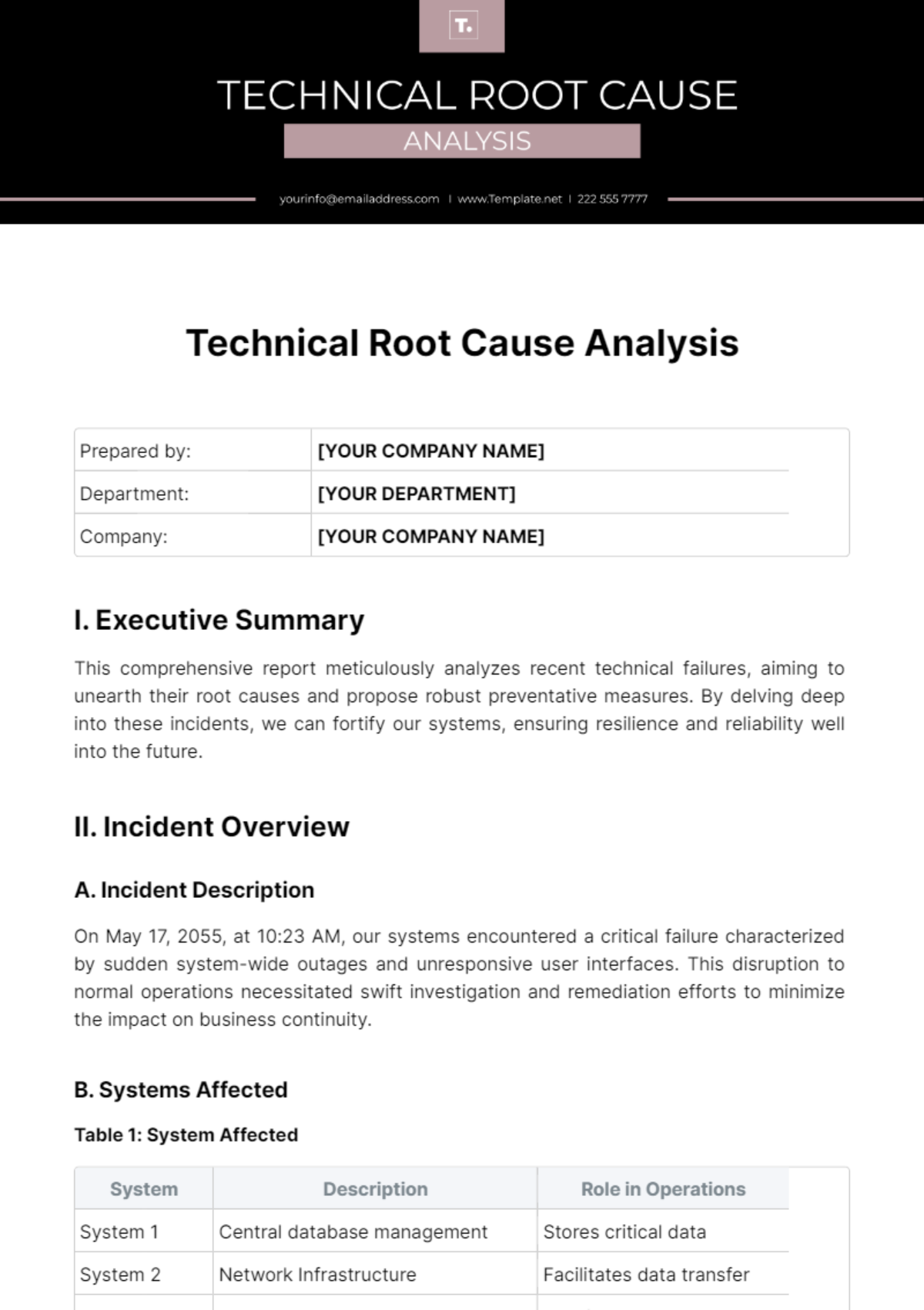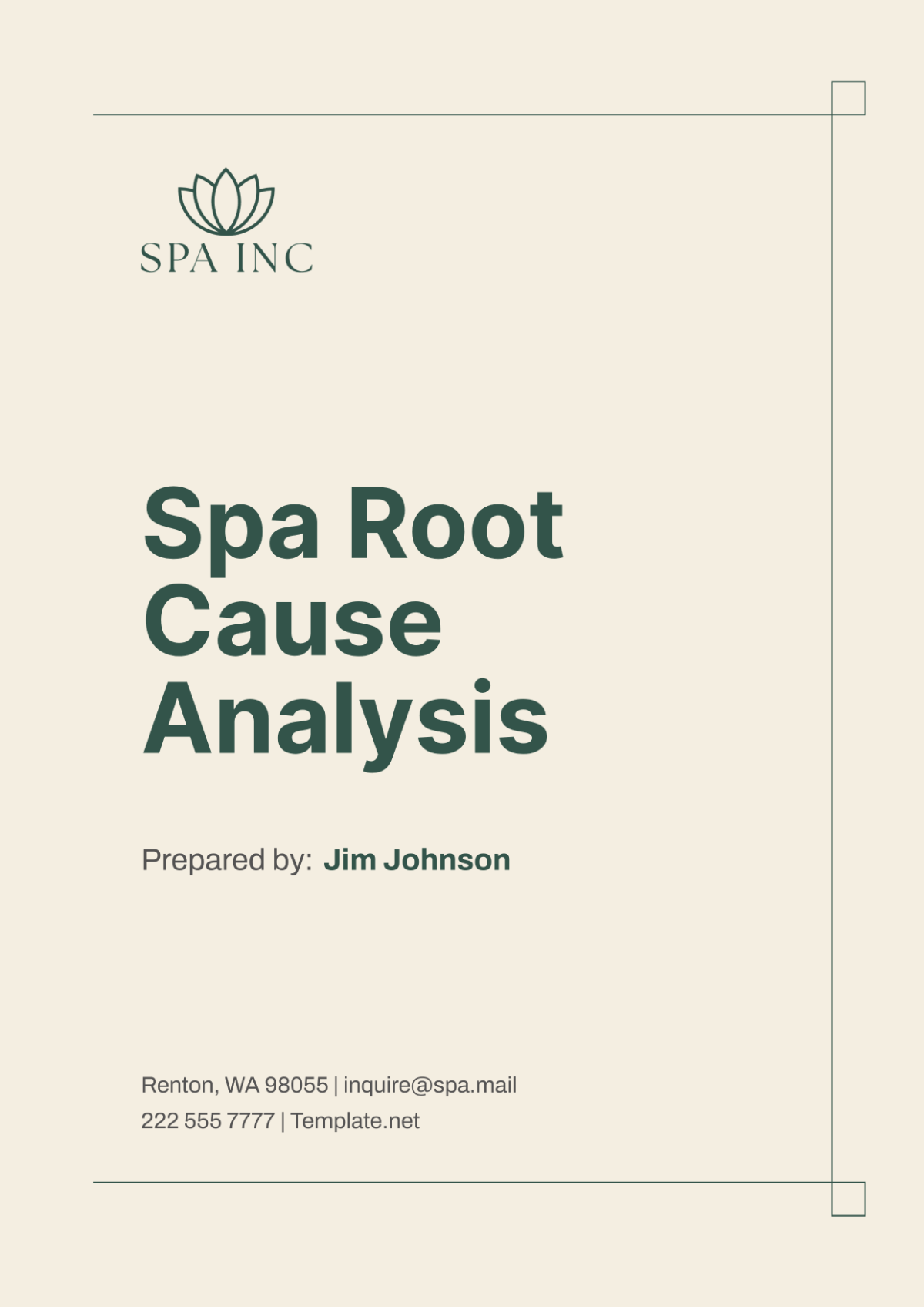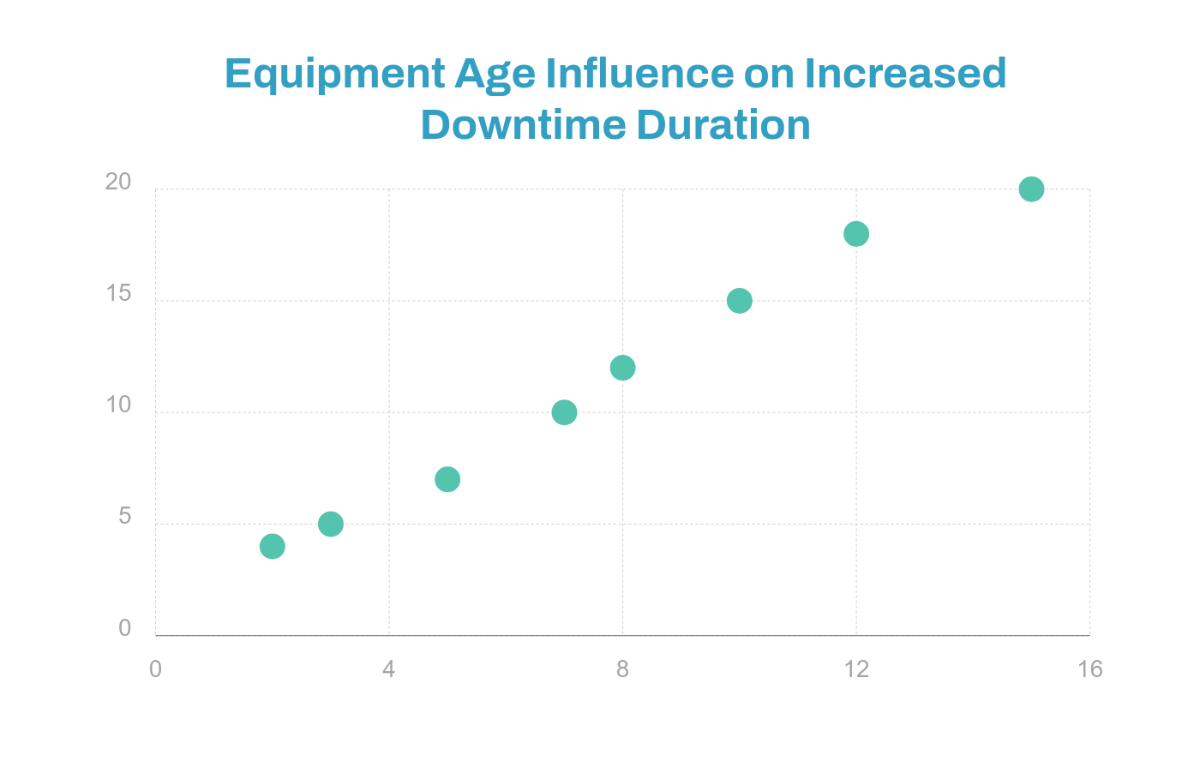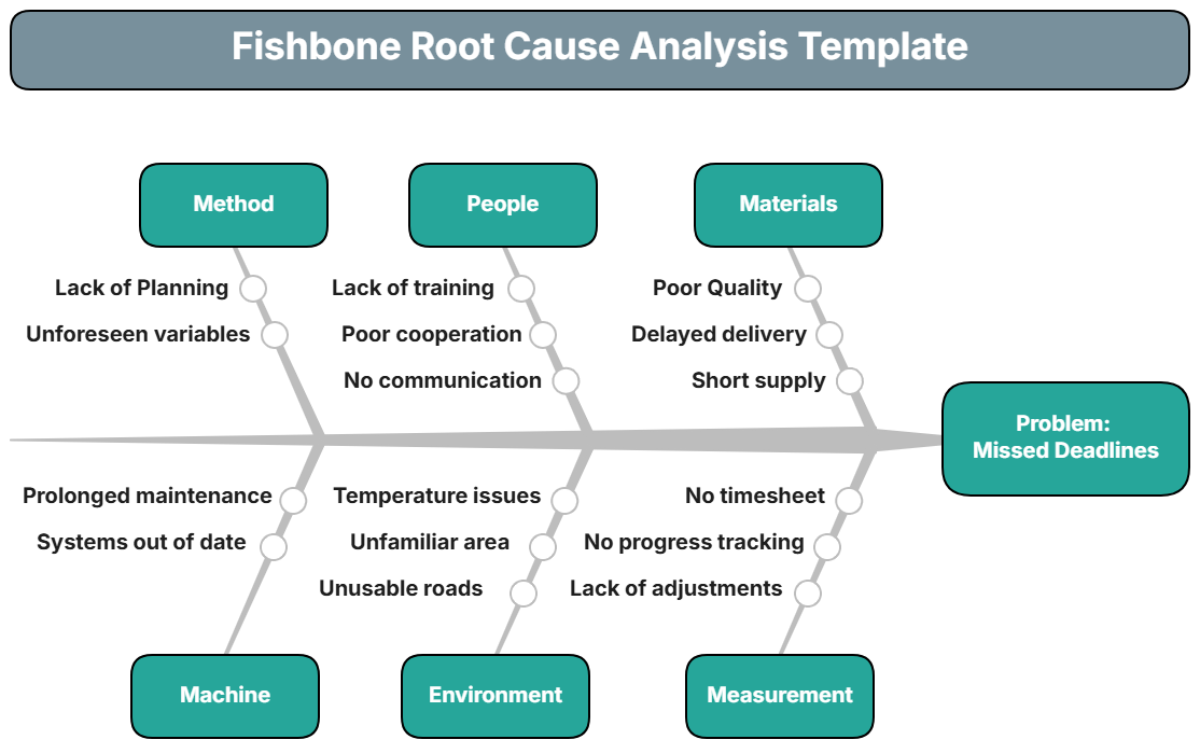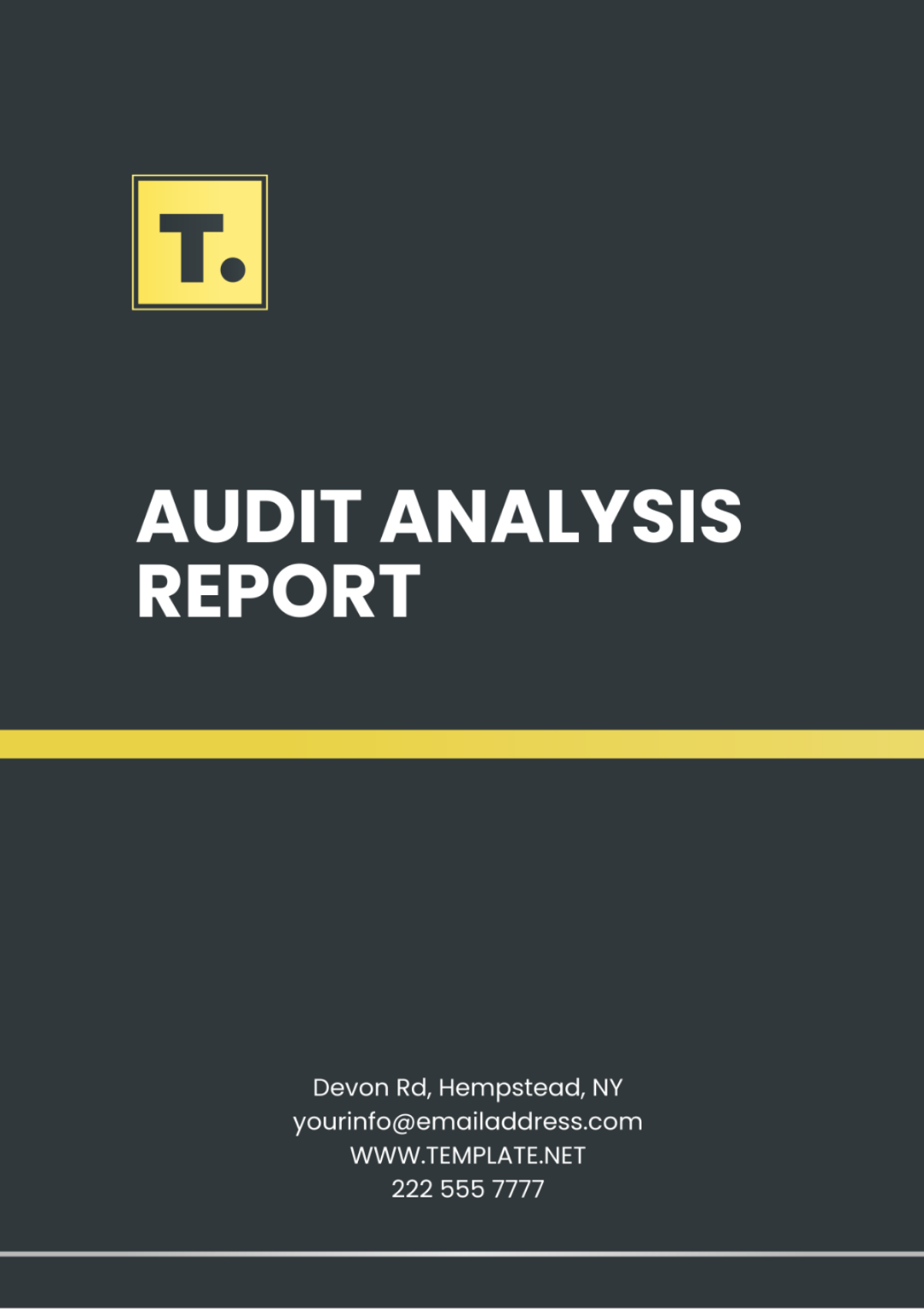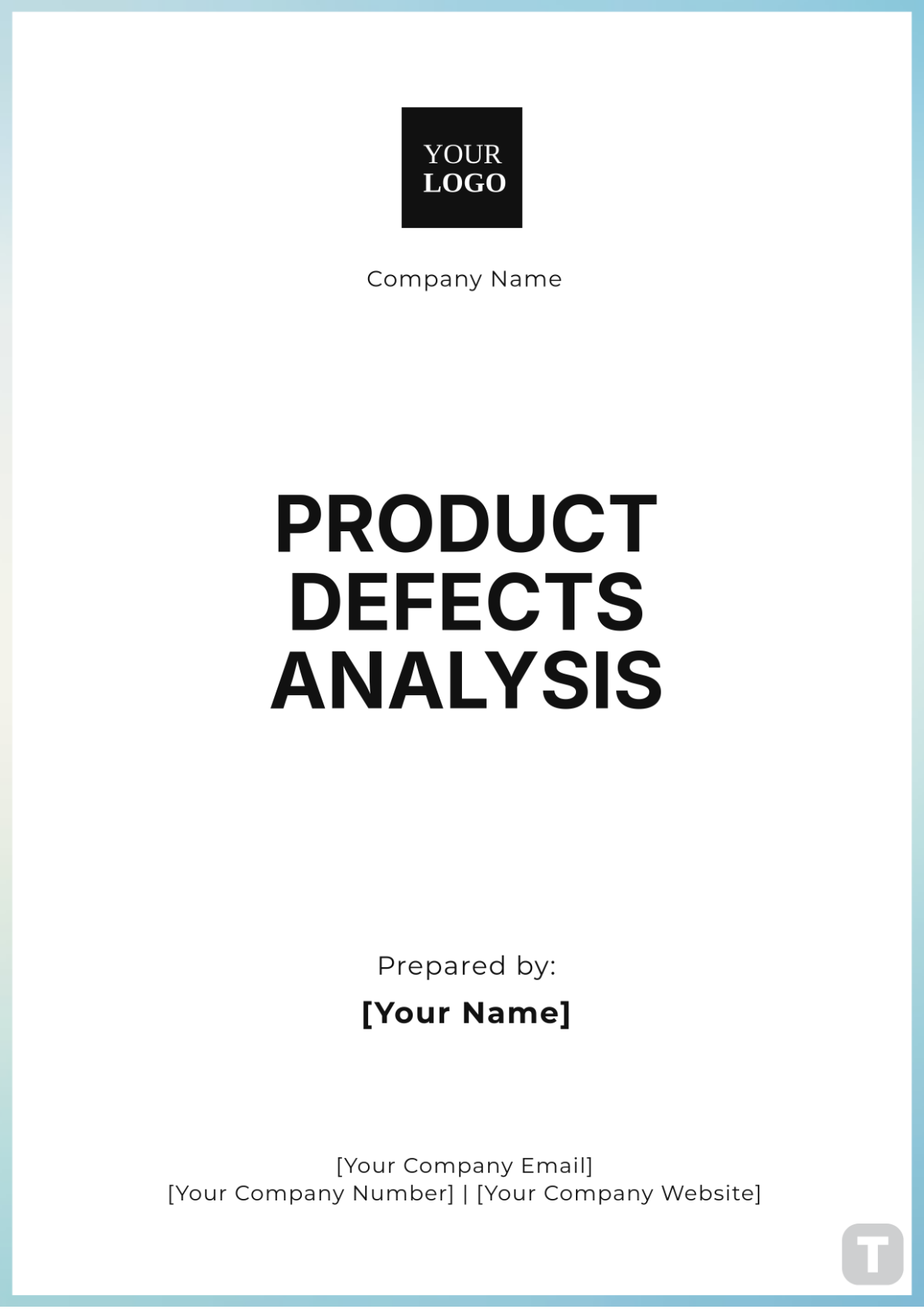Spa Root Cause Analysis
1. Introduction
The purpose of this Spa Root Cause Analysis is to identify and analyze underlying issues affecting the performance and customer satisfaction of [Your Company Name]. By systematically examining problems and their origins, this analysis aims to develop actionable recommendations to enhance the spa's operations, improve client experiences, and ensure long-term sustainability.
2. Problem Identification
This chapter outlines the key issues currently impacting [Your Company Name]. By identifying specific problems such as customer complaints, operational inefficiencies, and high employee turnover, we can better understand the areas that require attention and improvement. Detailed identification of these issues sets the stage for an in-depth analysis and targeted solutions.
2.1 Overview
[Your Company Name] has been experiencing a decline in customer satisfaction and operational inefficiencies over the past year. This section outlines the key problems identified through preliminary observations and feedback.
2.2 Key Problems
Customer Complaints: Increased number of customer complaints regarding service quality and waiting times.
Operational Inefficiencies: Delays and errors in scheduling, inventory management, and service delivery.
Employee Turnover: High turnover rates among staff, leading to disruptions and inconsistent service.
3. Data Collection and Analysis
In this chapter, we discuss the methods used to gather and analyze data relevant to the identified problems. We utilized a combination of customer feedback, employee interviews, operational records, and financial reports to obtain a comprehensive view of the situation. Analyzing this data helps us pinpoint patterns and trends that contribute to the underlying issues.
3.1 Data Sources
To accurately diagnose the root causes, data was collected from various sources including:
Customer feedback forms and surveys
Employee exit interviews
Operational performance records
Financial reports
Scheduling and booking logs
3.2 Data Analysis Methods
The following methods were used to analyze the collected data:
Statistical Analysis: Evaluating customer satisfaction scores, service delivery times, and employee turnover rates.
Trend Analysis: Identifying patterns and trends in customer complaints and operational issues.
Comparative Analysis: Comparing current performance metrics with historical data to identify deviations.
3.3 Data Summary
Data Source | Key Findings |
|---|---|
Customer Surveys | 40% of customers reported dissatisfaction with service quality and wait times. |
Employee Exit Interviews | 30% of staff cited poor management and lack of training as reasons for leaving. |
Operational Records | Average scheduling errors increased by 20% in the last six months. |
Financial Reports | Revenue dropped by 15% compared to the previous year. |
Booking Logs | Instances of double-booking and missed appointments increased by 25%. |
4. Root Cause Analysis Techniques
This chapter introduces the various techniques employed to uncover the root causes of the problems faced by [Your Company Name]. By using tools such as the Fishbone Diagram, Five Whys Analysis, and Pareto Analysis, we systematically dissect the issues to identify their origins. These techniques are essential for developing effective and sustainable solutions.
4.1 Fishbone Diagram
The Fishbone Diagram, also known as the Ishikawa or Cause-and-Effect Diagram, was used to identify potential causes of the identified problems. This technique helps categorize potential causes into major categories such as people, processes, equipment, and environment.
4.2 Five Whys Analysis
The Five Whys technique involves asking "why" multiple times (usually five) to drill down into the root cause of a problem. This method helps peel away the layers of symptoms and identify the underlying issue.
4.3 Pareto Analysis
The Pareto Principle, or the 80/20 rule, was used to identify the most significant factors contributing to the problems. By focusing on the top 20% of causes that contribute to 80% of the issues, efforts can be prioritized effectively.
5. Findings
In this chapter, we present the results of our root cause analysis. We detail the specific factors contributing to customer complaints, operational inefficiencies, and employee turnover. Understanding these root causes allows us to develop targeted recommendations to address and rectify the identified problems.
5.1 Customer Complaints
Root Causes
Inadequate Training: Staff lack sufficient training in customer service and specific spa treatments, leading to inconsistent service quality.
Overbooking: Ineffective scheduling systems result in overbooking and long wait times for customers.
5.2 Operational Inefficiencies
Root Causes
Poor Inventory Management: Lack of an automated inventory system leads to frequent stockouts and delays.
Manual Scheduling: Reliance on manual scheduling increases the risk of errors and inefficiencies.
5.3 Employee Turnover
Root Causes
Lack of Career Development: Employees feel there is no clear career path or opportunities for advancement.
Work Environment: Poor management practices and lack of support create a stressful work environment.
Root Cause Analysis Summary
Problem | Root Cause | Impact |
|---|---|---|
Customer Complaints | Inadequate Training | Decreased customer satisfaction |
Overbooking | Long wait times, missed appointments | |
Operational Inefficiencies | Poor Inventory Management | Delays, stockouts |
Manual Scheduling | Scheduling errors, inefficiencies | |
Employee Turnover | Lack of Career Development | High turnover rates, inconsistent service |
Work Environment | Stressful work conditions |
6. Recommendations
This chapter provides actionable recommendations based on the findings of our root cause analysis. We outline strategies to enhance training programs, improve scheduling systems, upgrade inventory management, and foster a supportive work environment. These recommendations aim to resolve the identified issues and improve overall operational efficiency and customer satisfaction.
6.1 Enhance Training Programs
Develop Comprehensive Training Modules: Create training programs that cover customer service, specific spa treatments, and use of spa equipment.
Regular Refresher Courses: Schedule periodic refresher courses to ensure staff remain proficient and updated on best practices.
6.2 Improve Scheduling Systems
Automate Scheduling: Implement automated scheduling software to reduce errors and prevent overbooking.
Customer Booking Portal: Develop an online booking portal for customers to manage their appointments, reducing the workload on staff.
6.3 Upgrade Inventory Management
Implement Inventory Software: Adopt inventory management software to track stock levels, predict shortages, and automate reordering.
Regular Audits: Conduct regular inventory audits to ensure accurate stock levels and identify any discrepancies.
6.4 Enhance Employee Engagement
Career Development Programs: Introduce clear career paths and opportunities for professional growth, including training and promotions.
Improve Work Environment: Foster a supportive work environment through regular feedback, team-building activities, and improved management practices.
7. Implementation Plan
In this chapter, we detail a structured plan to implement the recommended solutions. We provide a timeline, budget, and resource allocation to ensure successful execution. The implementation plan serves as a roadmap to guide [Your Company Name] through the process of making necessary improvements.
7.1 Timeline
Activity | Start Date | End Date | Responsible Person |
|---|---|---|---|
Develop Training Modules | February 1, 2050 | March 31, 2050 | Training Manager |
Implement Scheduling Software | April 1, 2050 | May 31, 2050 | IT Department |
Launch Customer Booking Portal | April 1, 2050 | June 30, 2050 | IT Department |
Adopt Inventory Management Software | May 1, 2050 | June 30, 2050 | Inventory Manager |
Conduct Inventory Audits | July 1, 2050 | Ongoing | Inventory Team |
Introduce Career Development Programs | June 1, 2050 | July 31, 2050 | HR Department |
Improve Work Environment | June 1, 2050 | Ongoing | HR Department |
7.2 Budget
Item | Estimated Cost ($) |
|---|---|
Training Module Development | 10,000 |
Scheduling Software | 15,000 |
Customer Booking Portal | 20,000 |
Inventory Management Software | 10,000 |
Career Development Programs | 5,000 annually |
Work Environment Improvements | 5,000 annually |
Total Estimated Cost | 65,000 |
7.3 Resource Allocation
Human Resources: Assign dedicated teams for training, IT implementation, inventory management, and HR initiatives.
Financial Resources: Allocate the budget as detailed above, ensuring adequate funding for each activity.
Time Resources: Follow the timeline to ensure timely completion of each activity.
8. Monitoring and Review
This chapter emphasizes the importance of continuous monitoring and review to ensure the effectiveness of implemented solutions. We outline methods for tracking performance metrics, conducting regular reviews, and making adjustments as needed. This ongoing process is crucial for sustaining improvements and achieving long-term success.
8.1 Monitoring
Performance Metrics: Establish key performance indicators (KPIs) to measure the success of the implemented recommendations. Examples include customer satisfaction scores, service delivery times, inventory accuracy, and employee retention rates.
Regular Reviews: Conduct monthly reviews to assess progress and make adjustments as needed.
8.2 Review
Quarterly Review Meetings: Hold quarterly meetings with management and staff to review progress, discuss challenges, and make necessary adjustments.
Annual Review: Conduct a comprehensive annual review to evaluate the overall effectiveness of the changes and plan for further improvements.
Performance Metrics Table
Metric | Baseline (Jan 2050) | Target (Dec 2050) |
|---|---|---|
Customer Satisfaction Score | 60% | 85% |
Service Delivery Time | 15 minutes delay | 5 minutes delay |
Inventory Accuracy | 80% | 95% |
Employee Retention Rate | 70% | 90% |
9. Conclusion
This comprehensive Root Cause Analysis has identified critical issues affecting [Your Company Name] and proposed actionable recommendations to address these problems. By implementing the suggested changes, the spa can enhance operational efficiency, improve customer satisfaction, and create a supportive work environment for its employees. Continuous monitoring and review will ensure that these improvements are sustained, driving long-term success for [Your Company Name].
10. Appendices
Appendix A: Customer Survey Results
Question | Positive Responses (%) |
|---|---|
Satisfaction with Service Quality | 50% |
Satisfaction with Wait Times | 45% |
Likelihood of Recommending the Spa to Others | 55% |
Appendix B: Employee Exit Interview Summary
Reason for Leaving | Percentage (%) |
|---|---|
Poor Management | 30% |
Lack of Training | 25% |
No Career Development Opportunities | 20% |
Stressful Work Environment | 15% |
Other | 10% |
Appendix C: Implementation Plan Details
Activity | Description |
|---|---|
Develop Training Modules | Create comprehensive training programs for customer service, spa treatments, and equipment use. |
Implement Scheduling Software | Select and install an automated scheduling system to reduce errors and overbooking. |
Launch Customer Booking Portal | Develop an online portal for customers to book and manage their appointments. |
Adopt Inventory Management Software | Implement software to track inventory levels, automate reordering, and conduct regular audits. |
Introduce Career Development Programs | Develop clear career paths and provide opportunities for professional growth and training. |
Improve Work Environment | Enhance management practices, provide regular feedback, and organize team-building activities. |
Prepared by: [Your Name]
Company: [Your Company Name]
Address: [Your Company Address]
Phone: [Your Company Number]
Email: [Your Email]
Date: January 1, 2050
This Spa Root Cause Analysis ensures that [Your Company Name] addresses and resolves key operational issues through a structured and thorough approach. Regular updates and reviews will ensure the sustained success and continuous improvement of the spa's operations and customer satisfaction levels.

